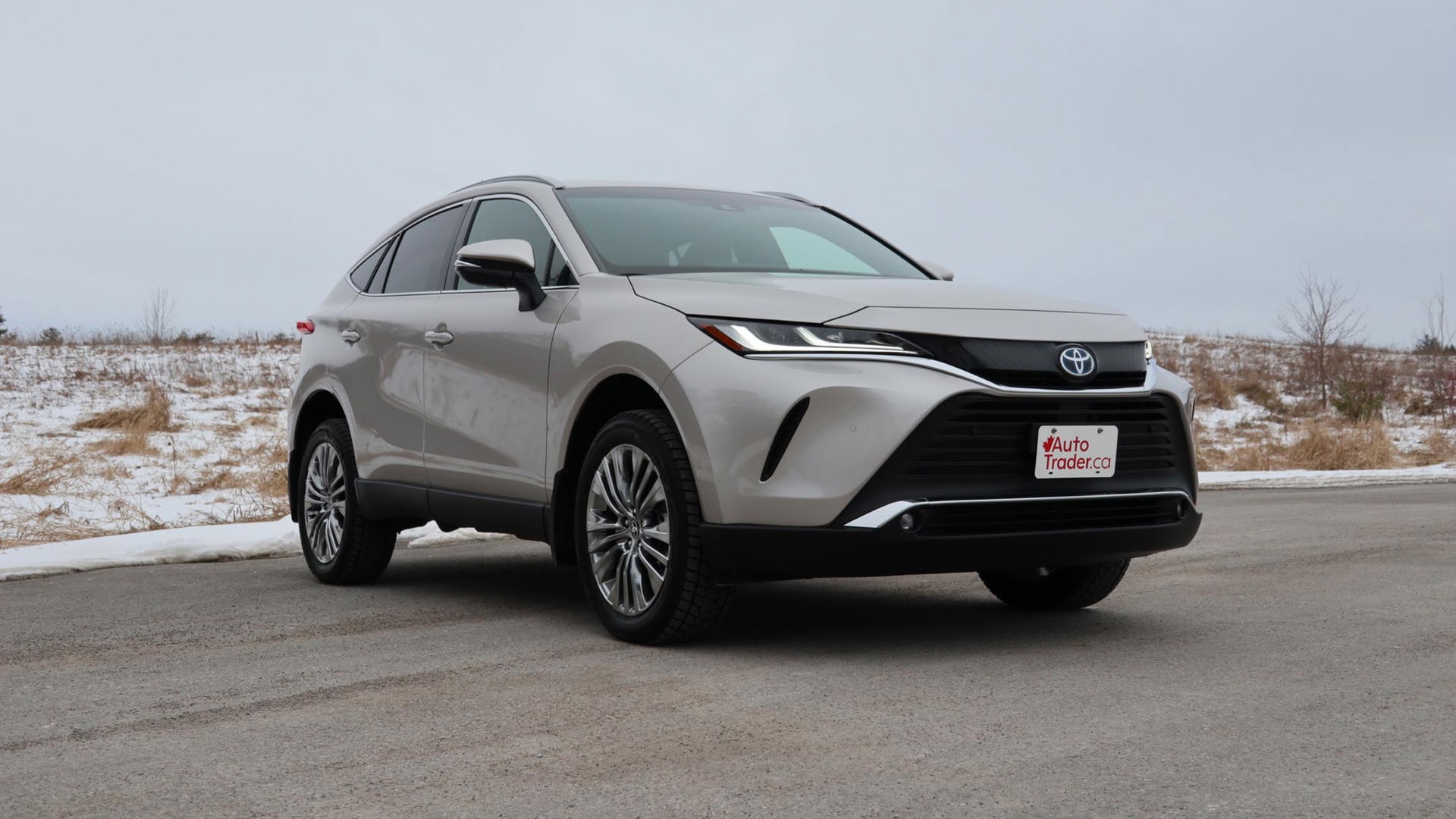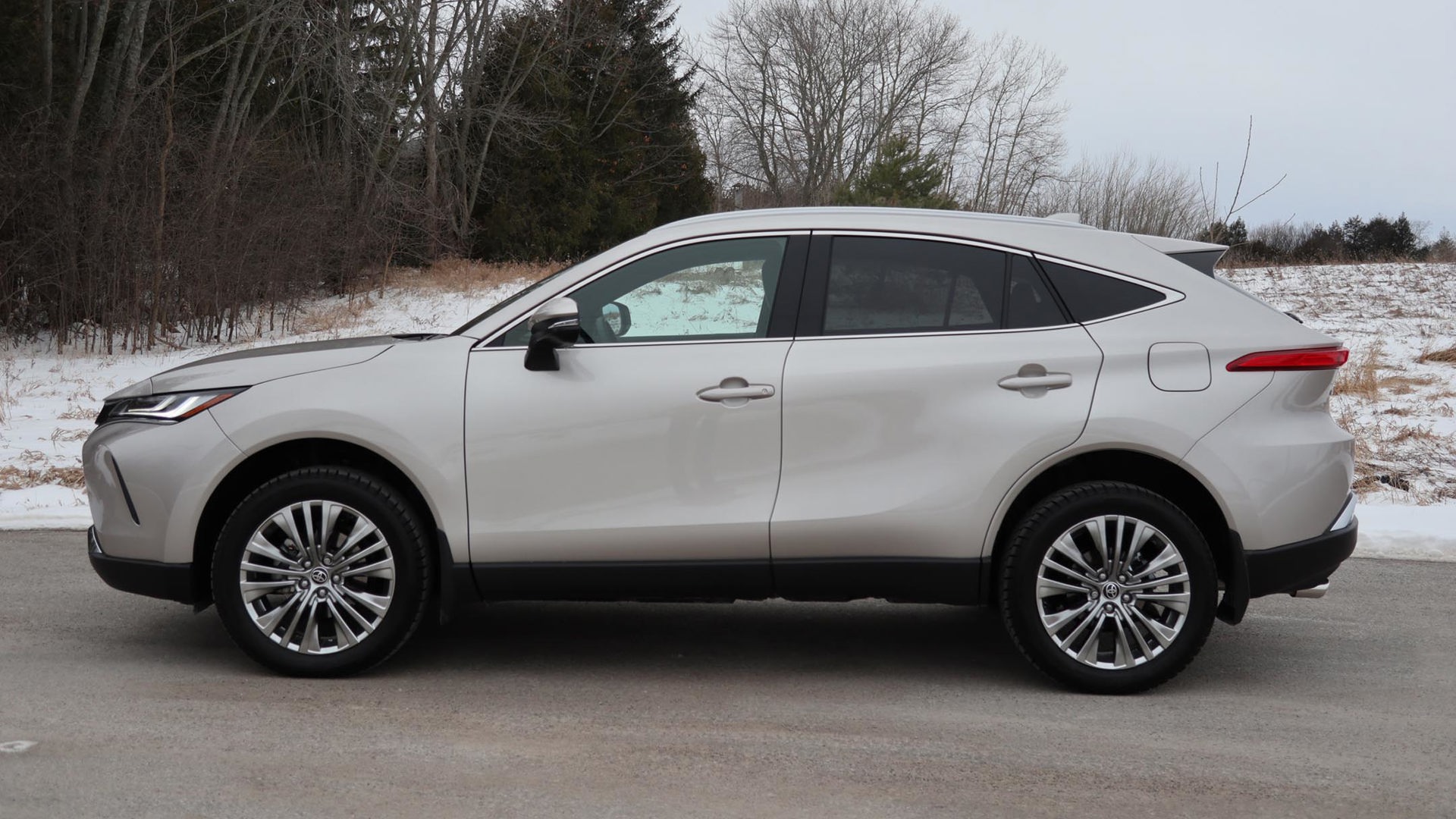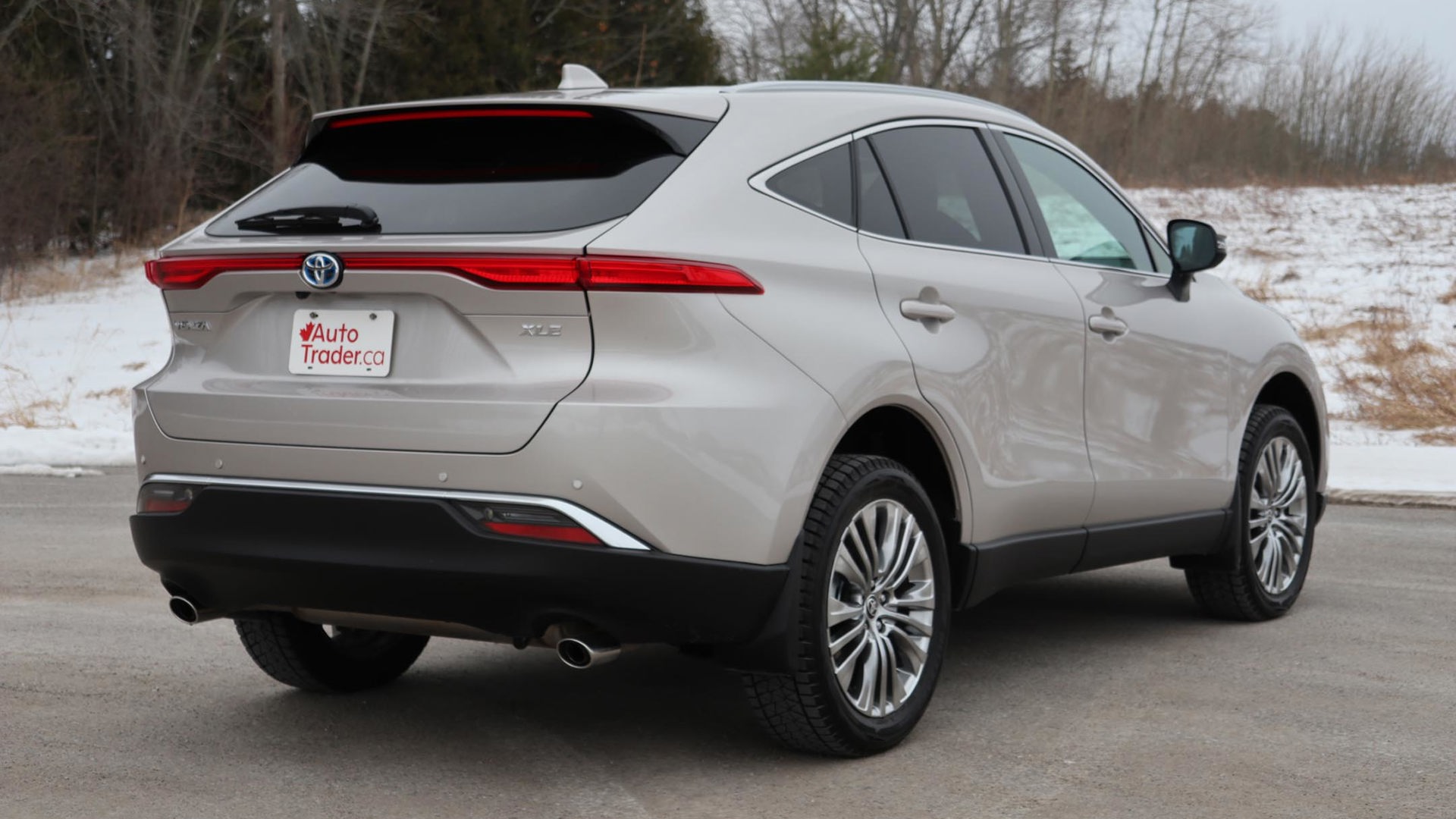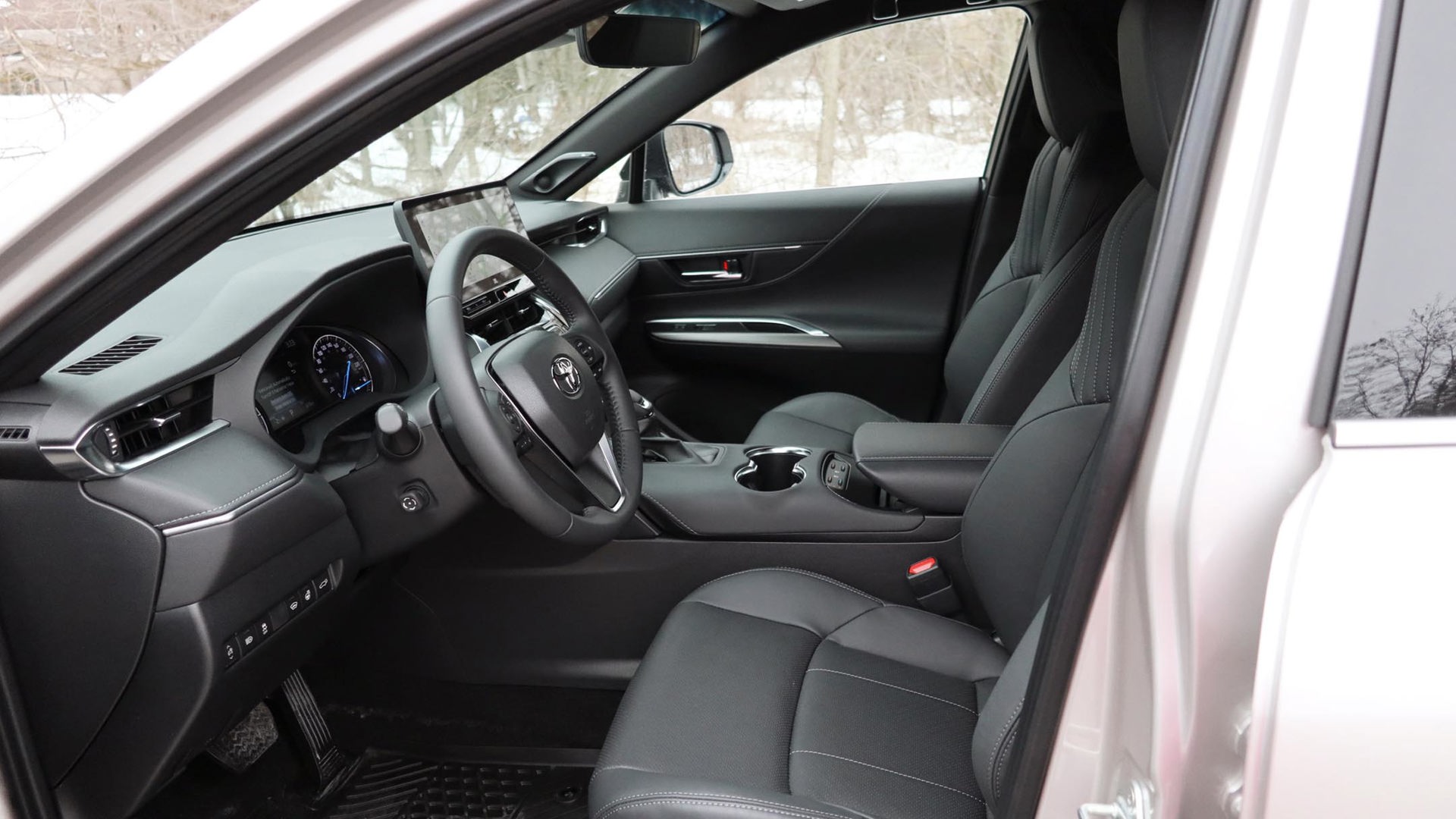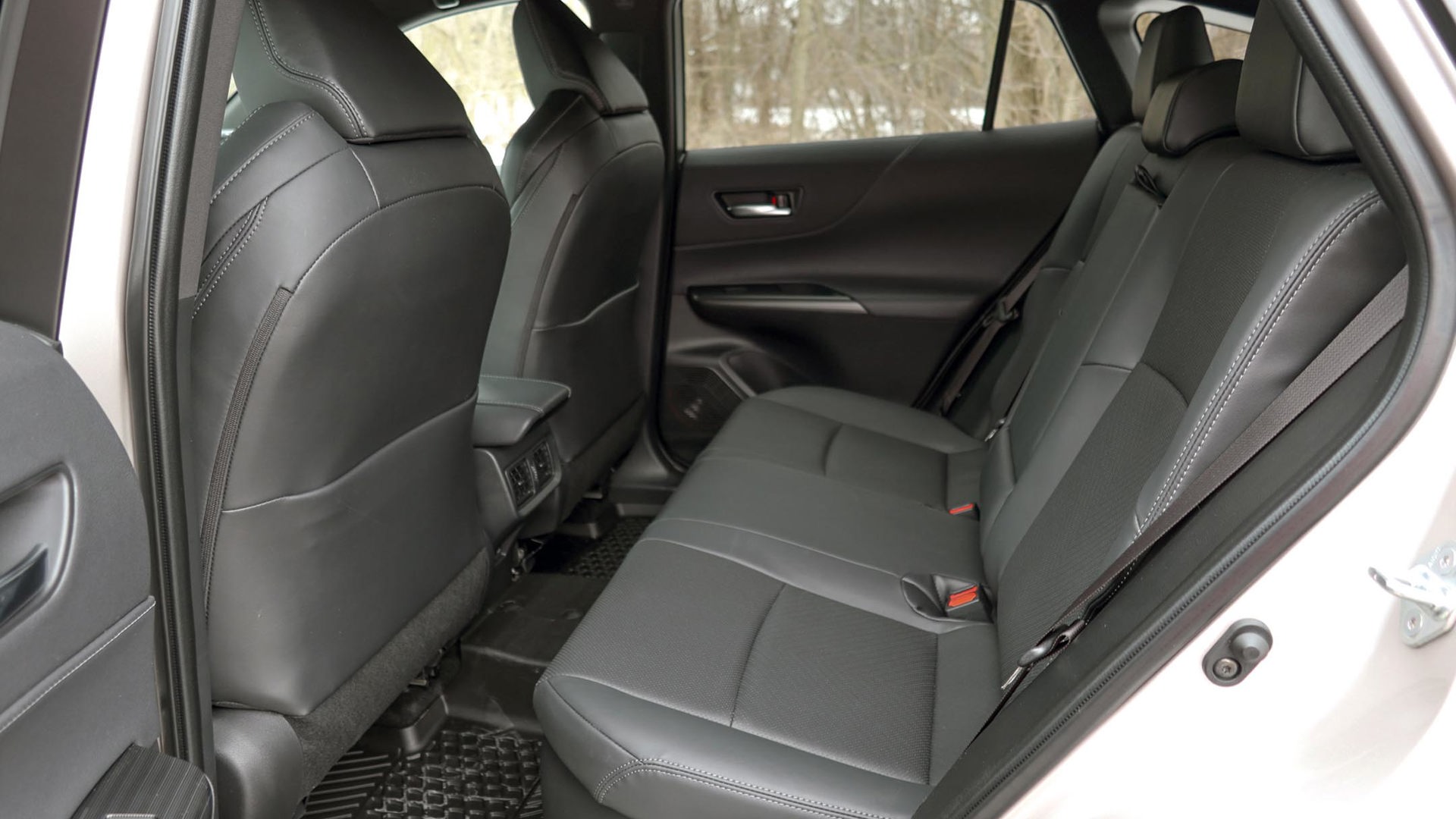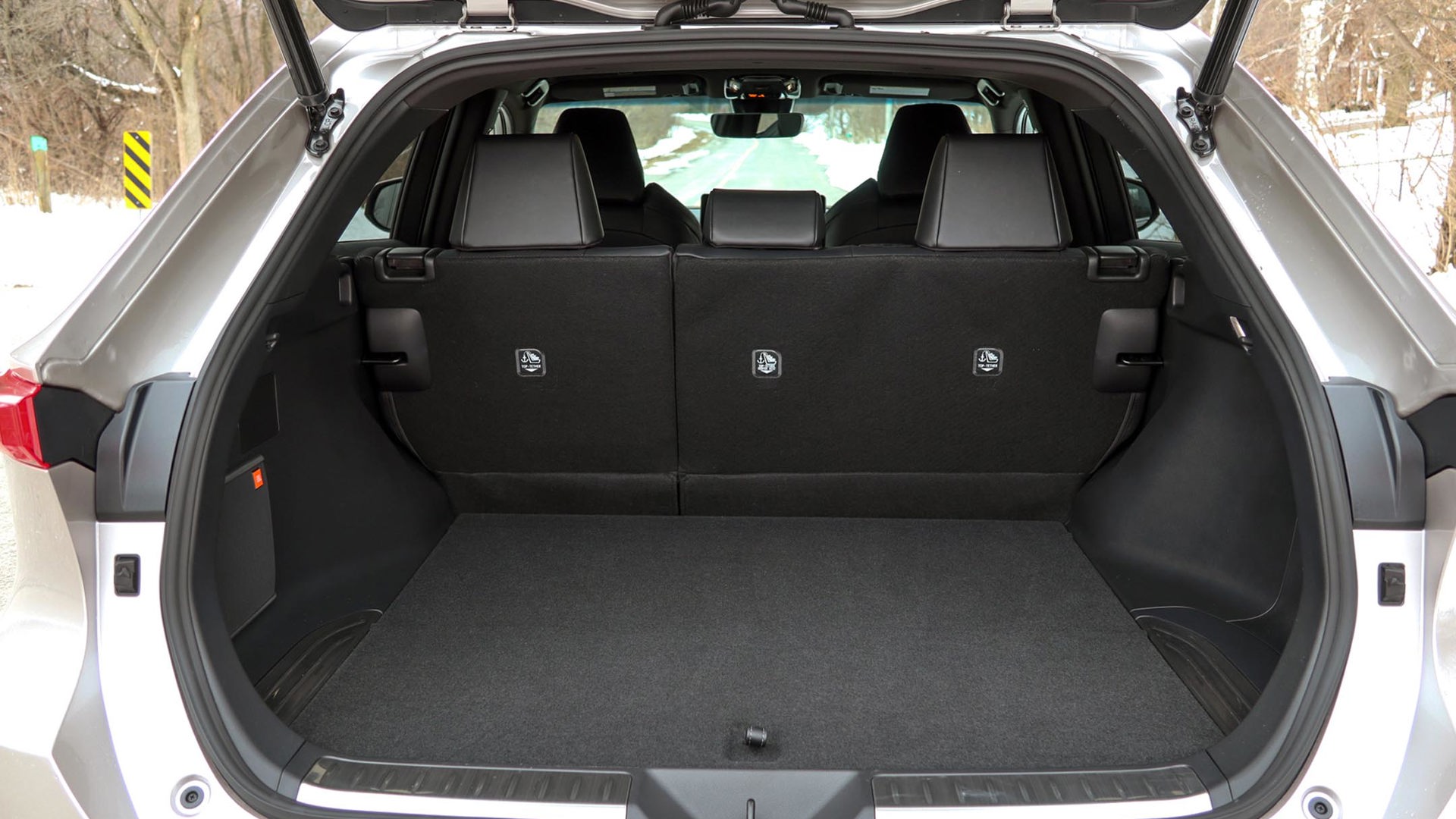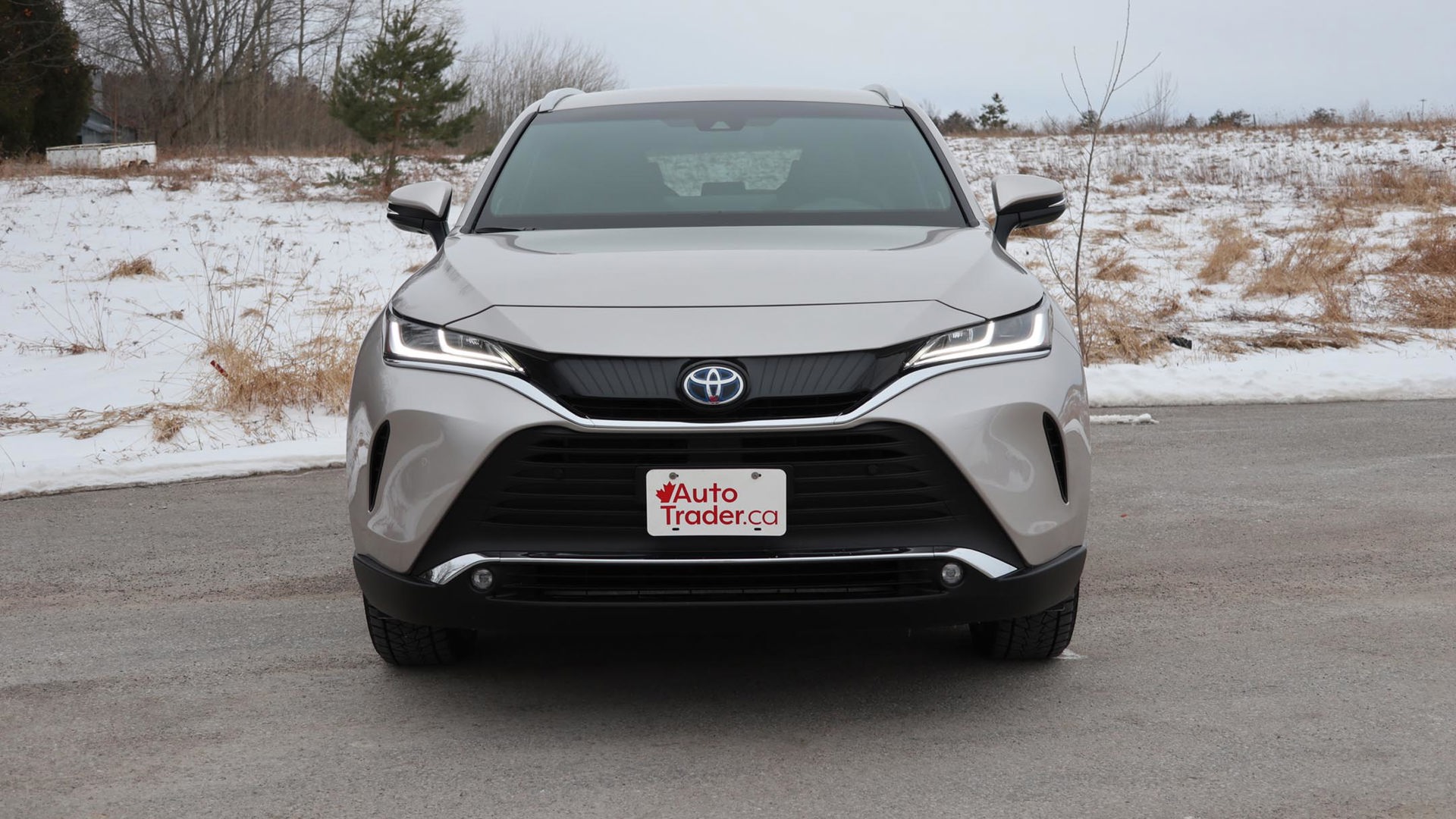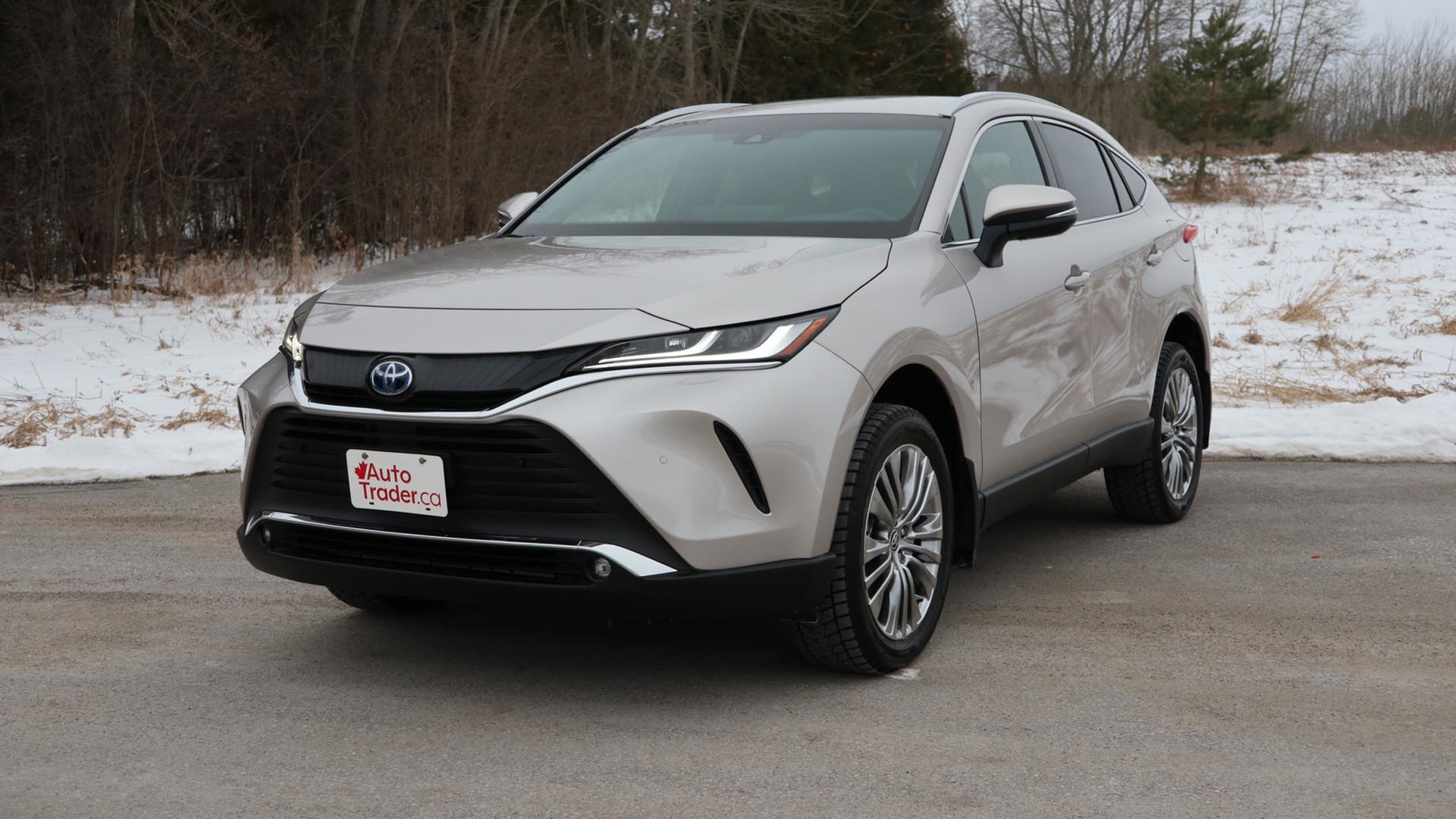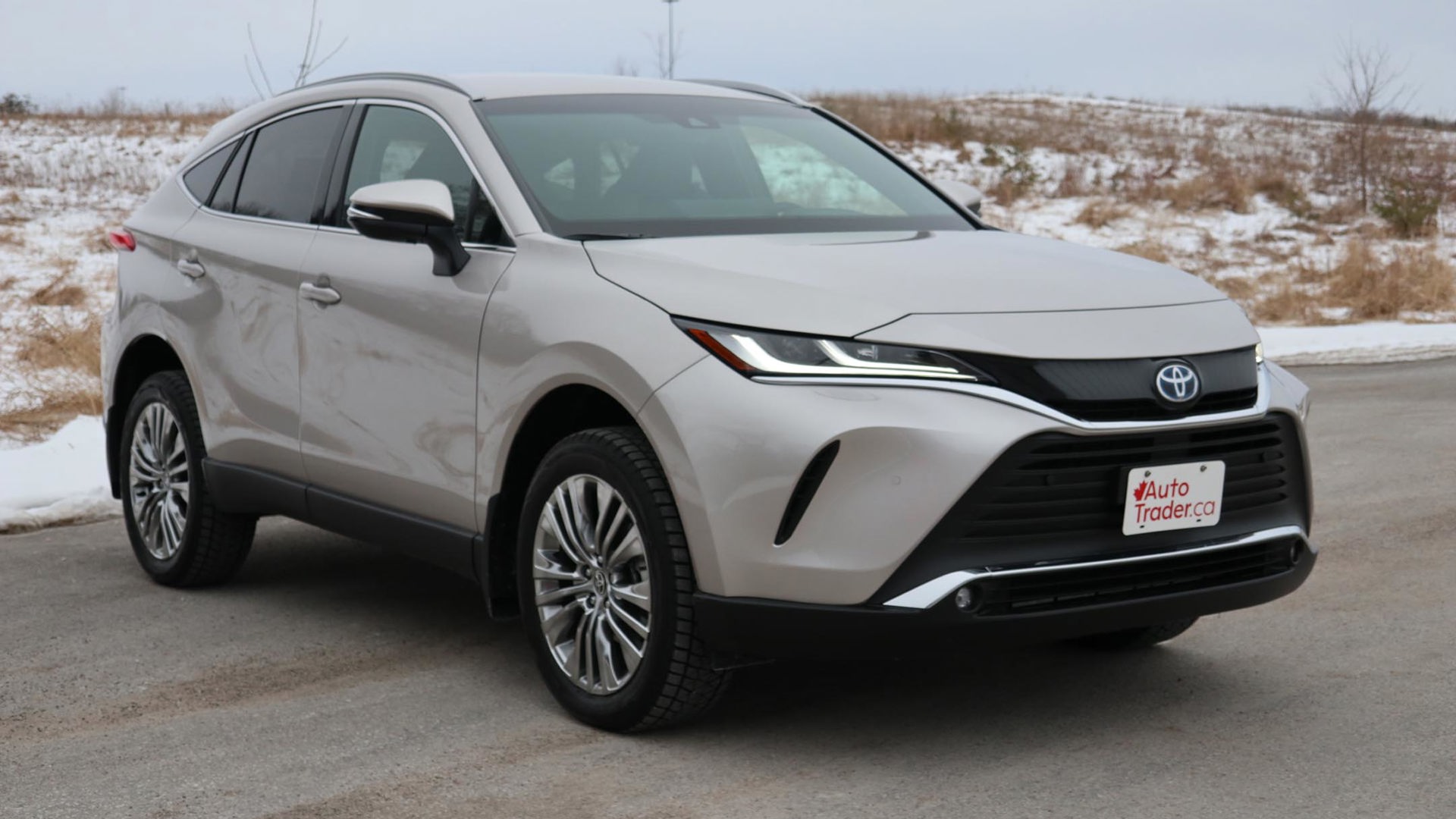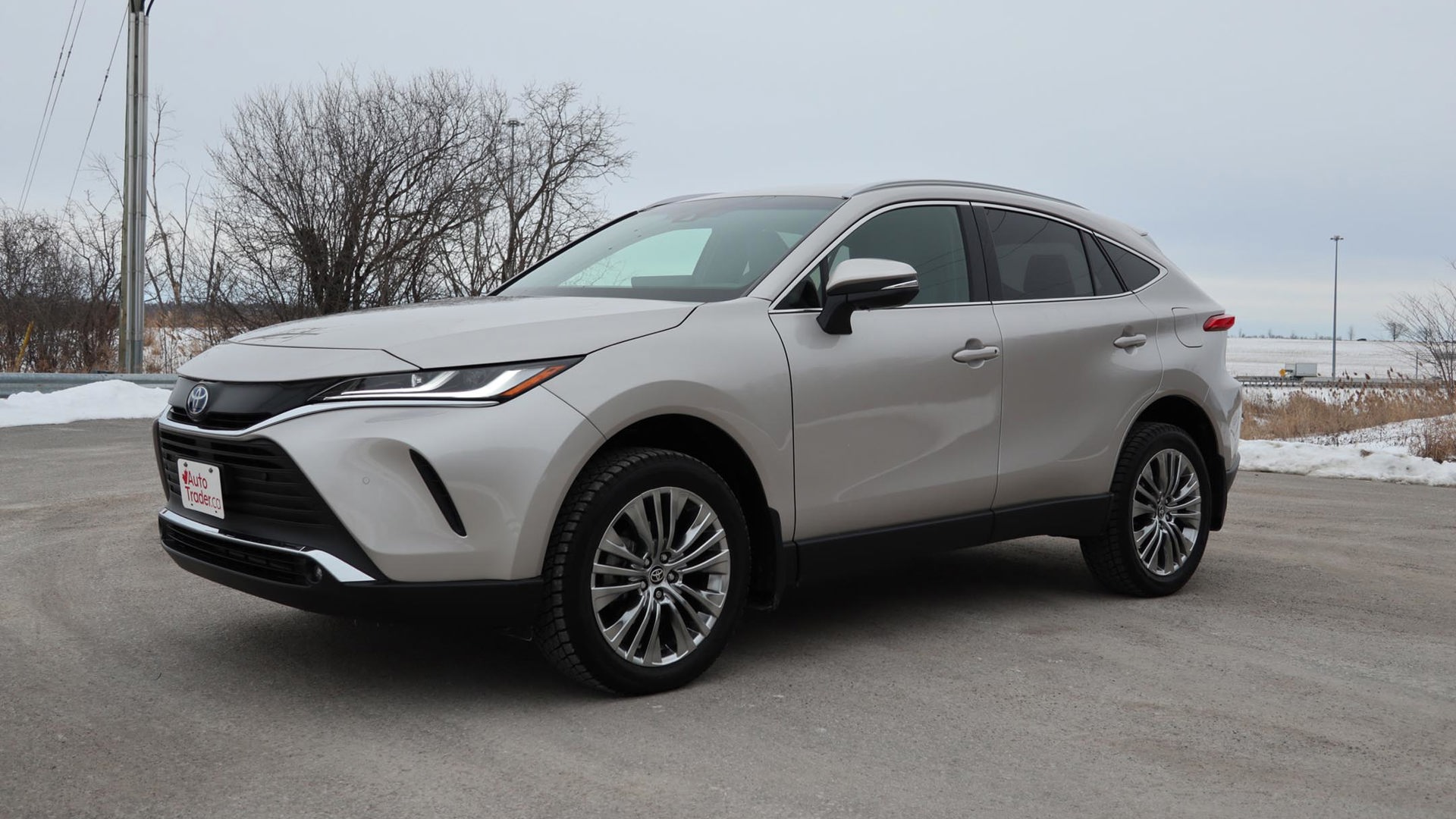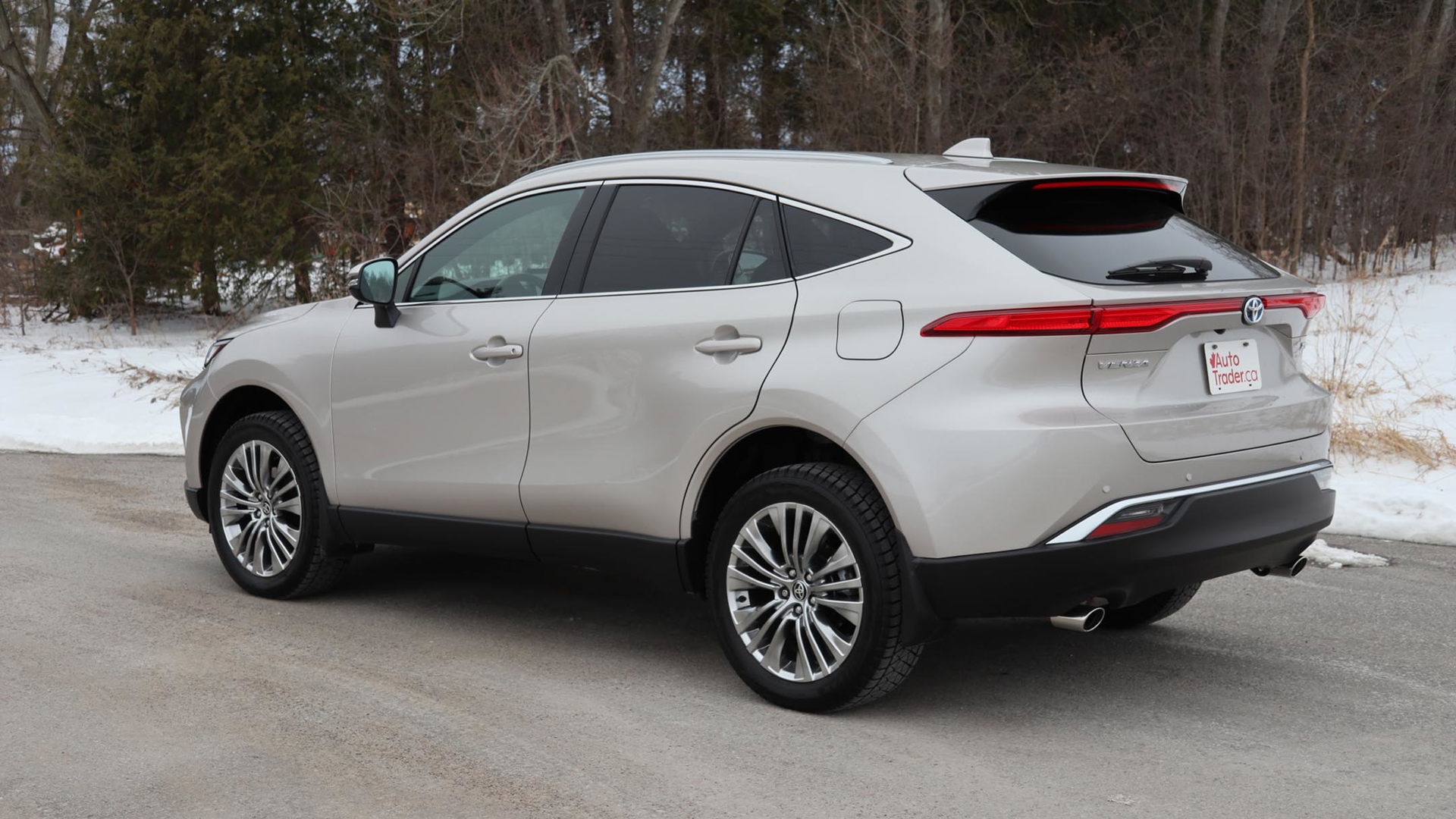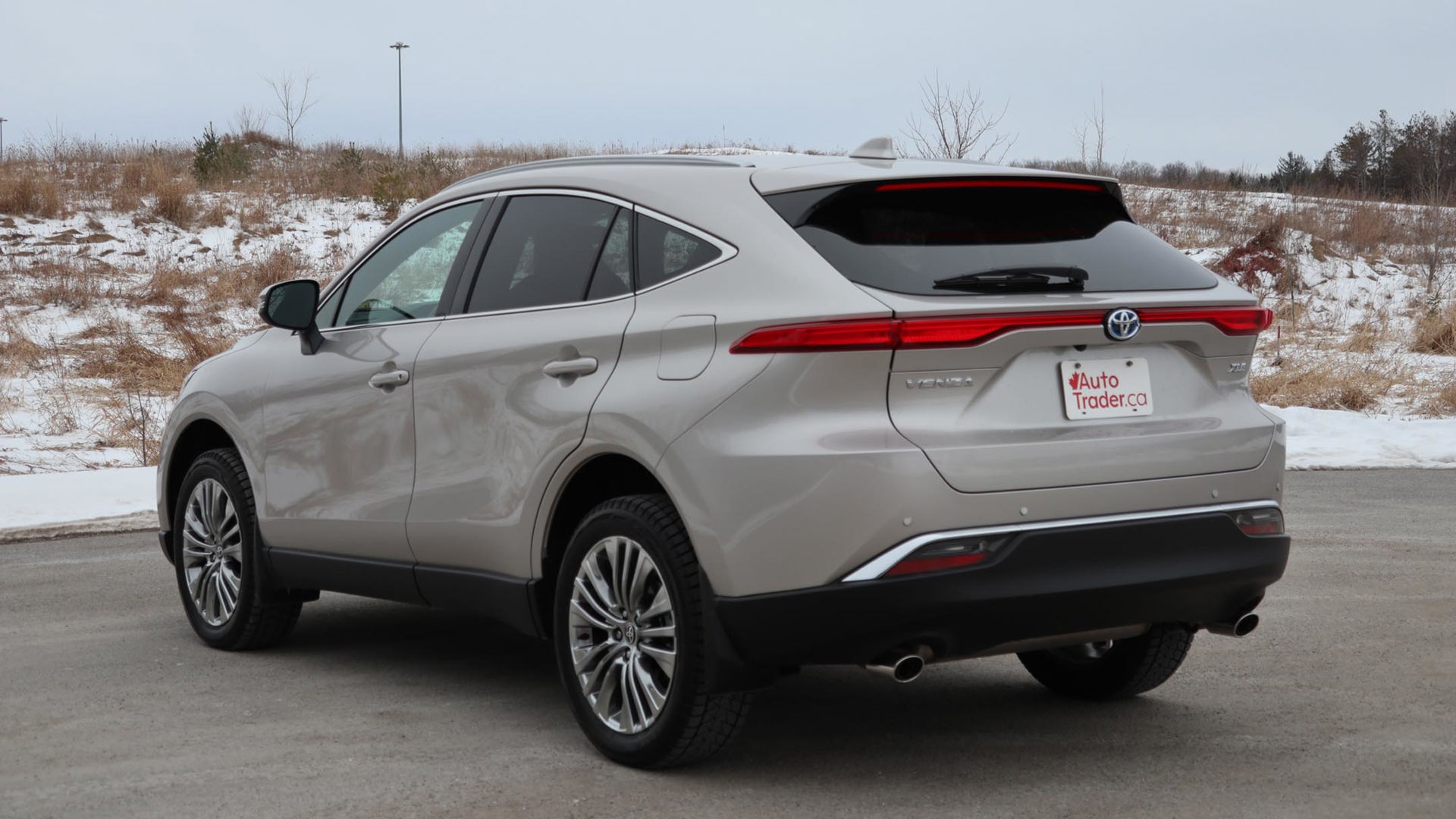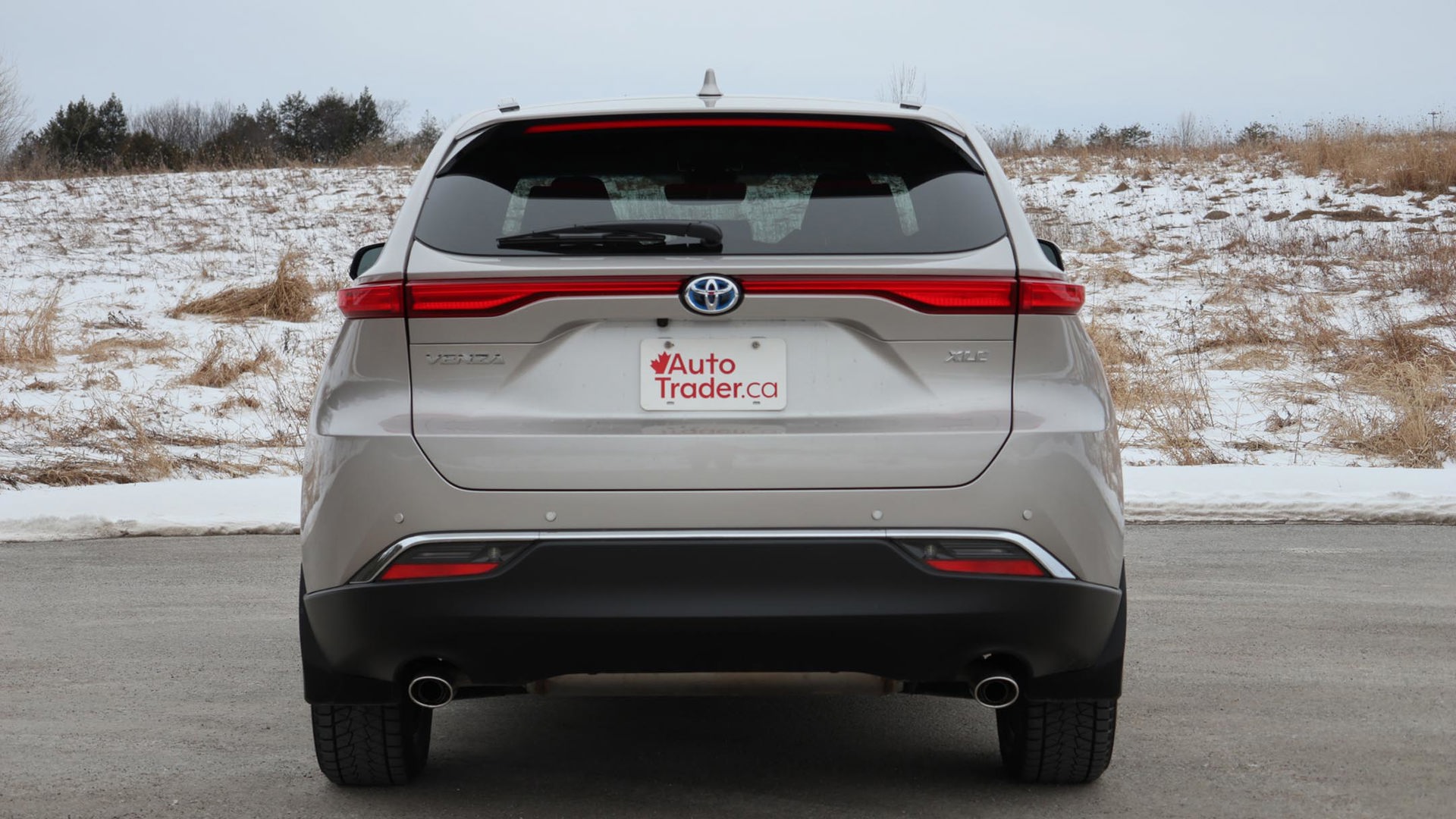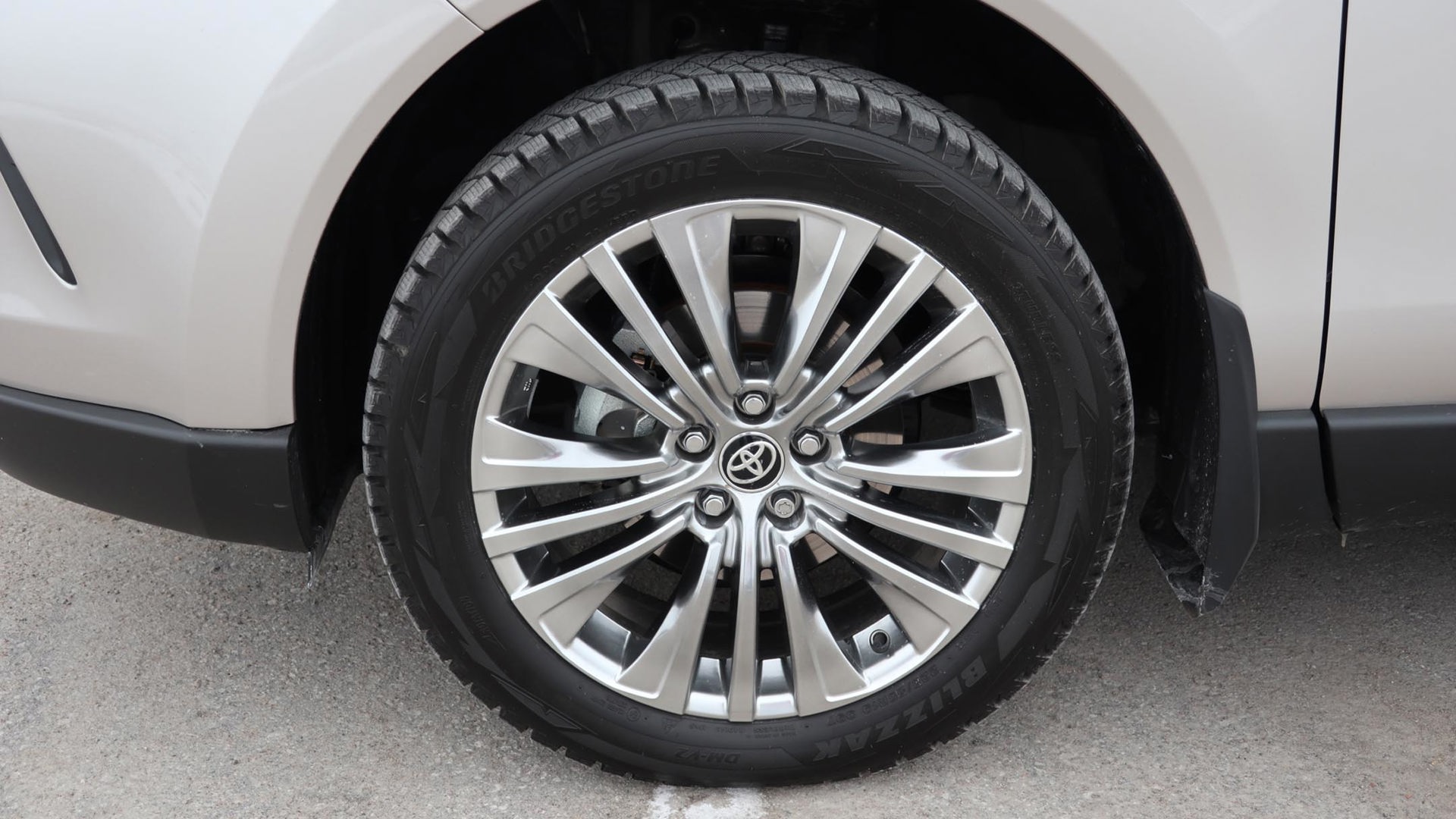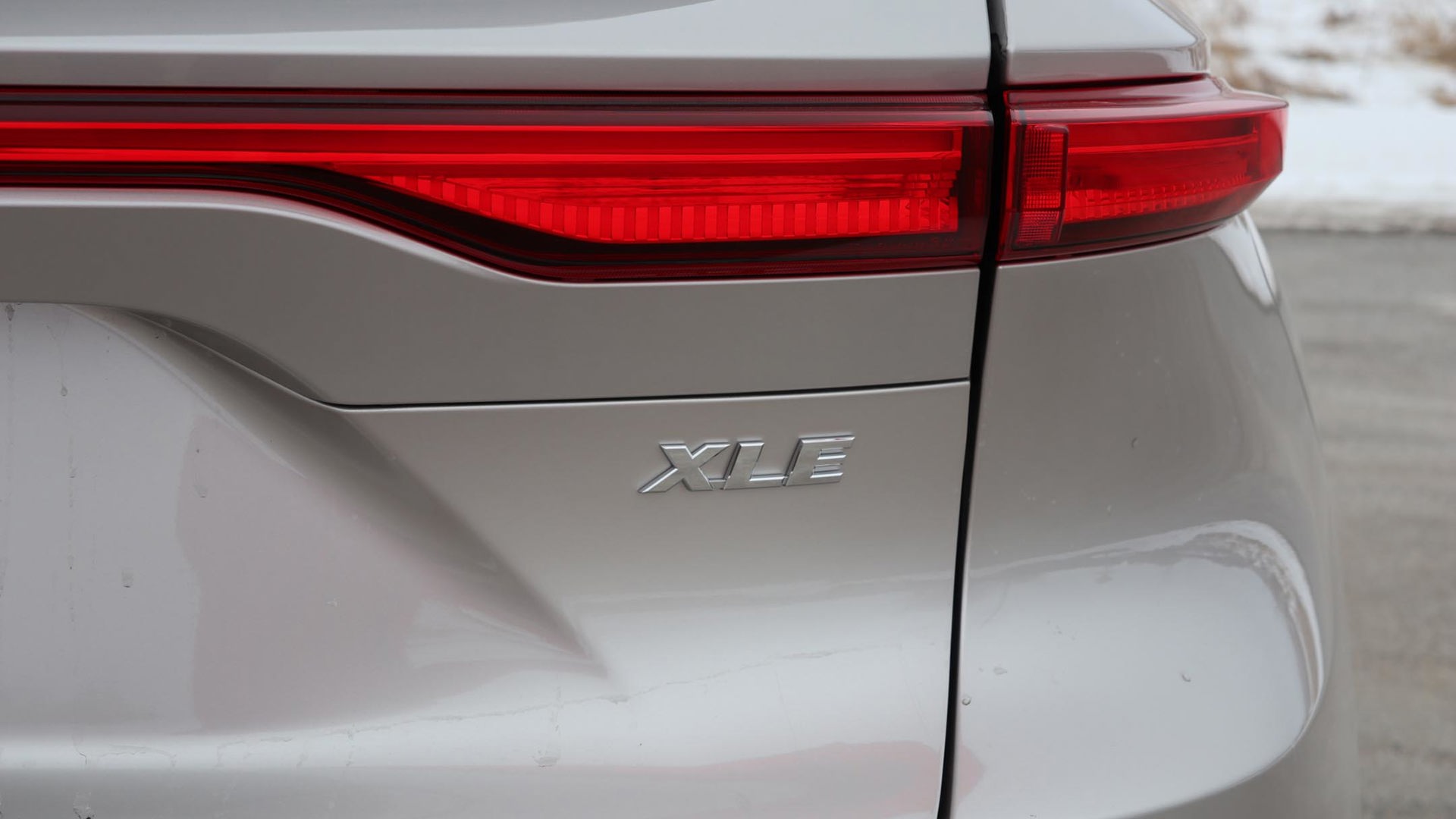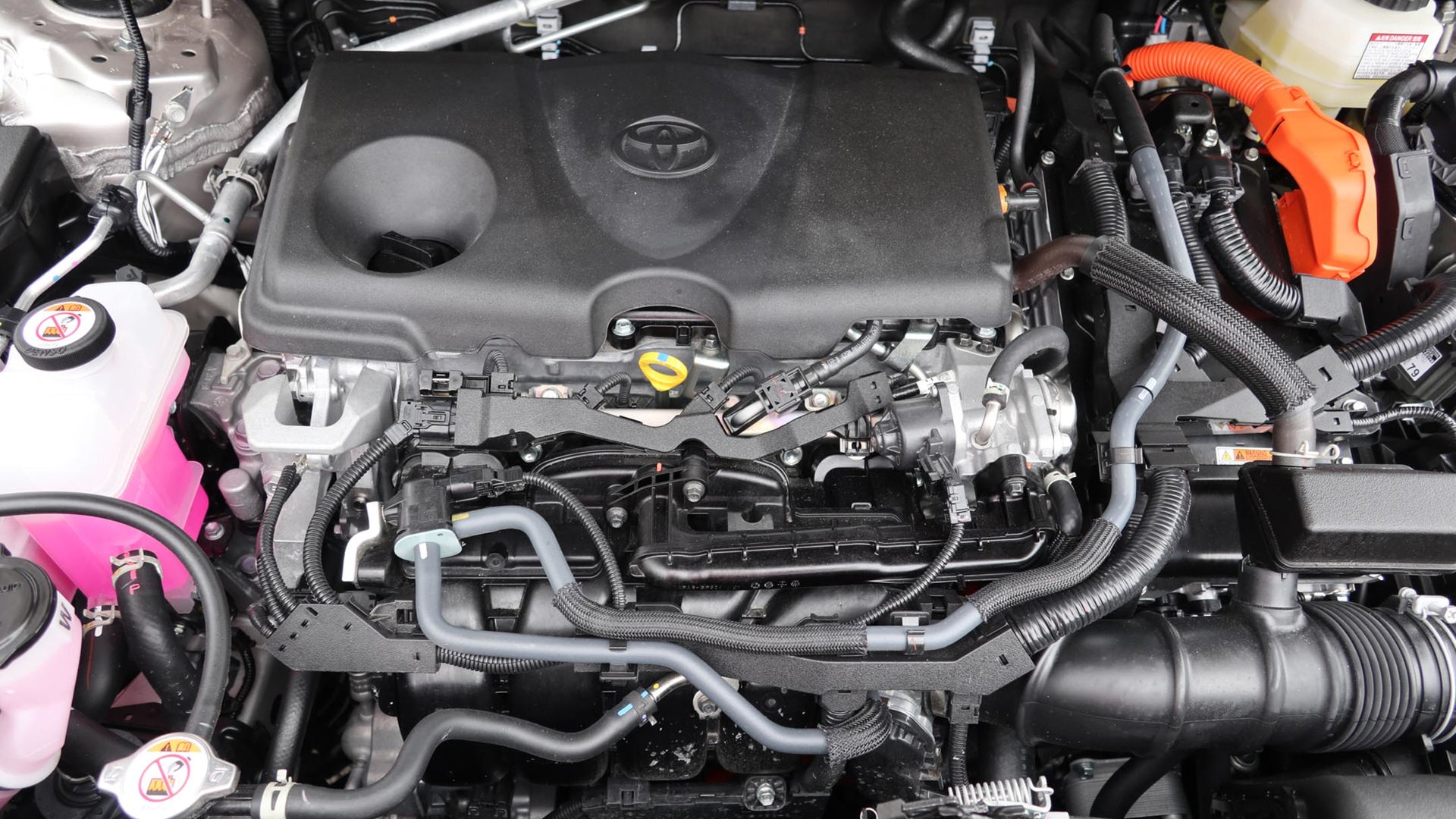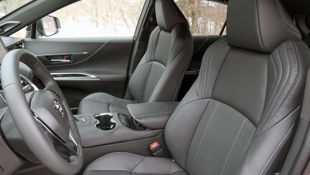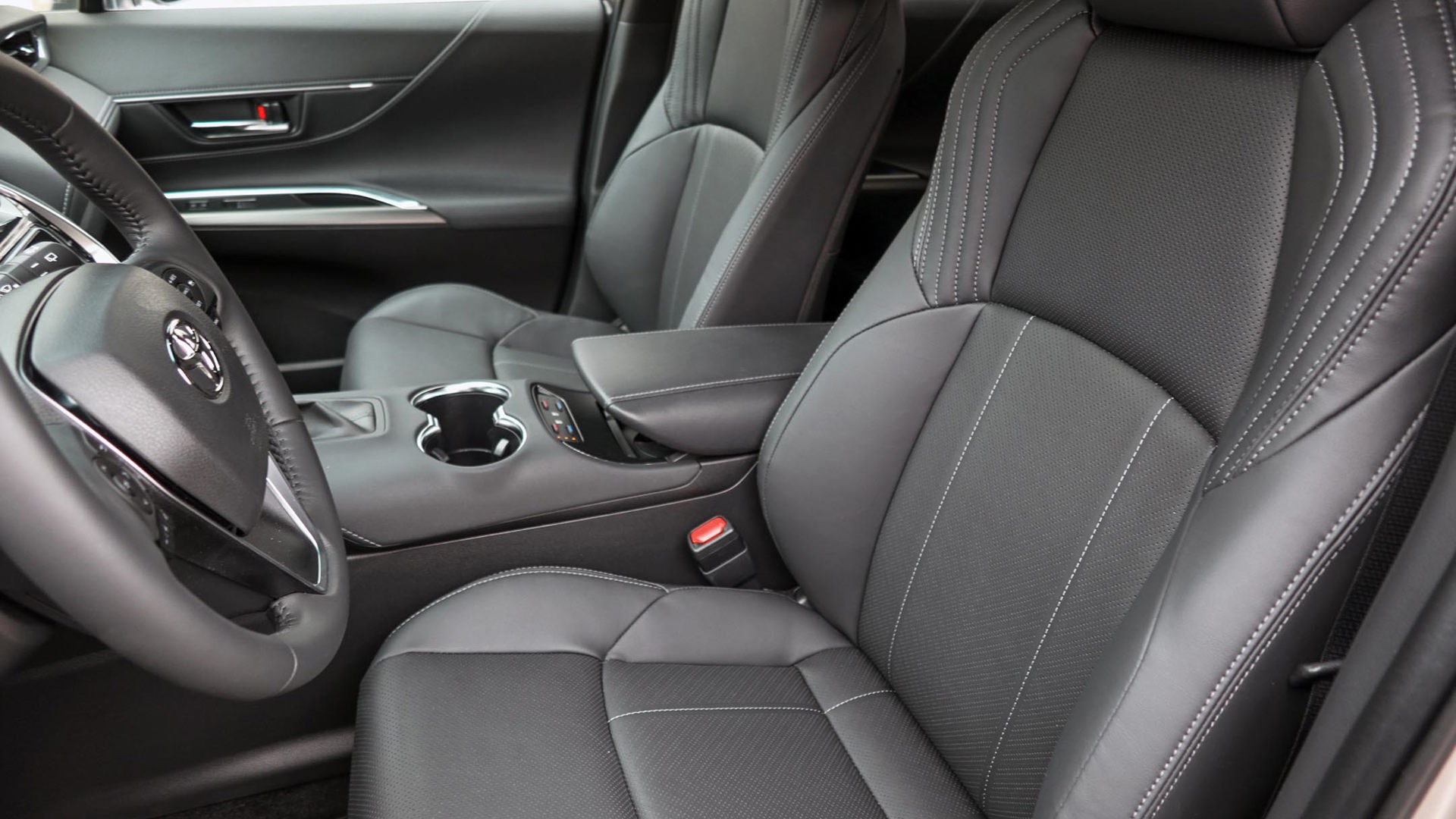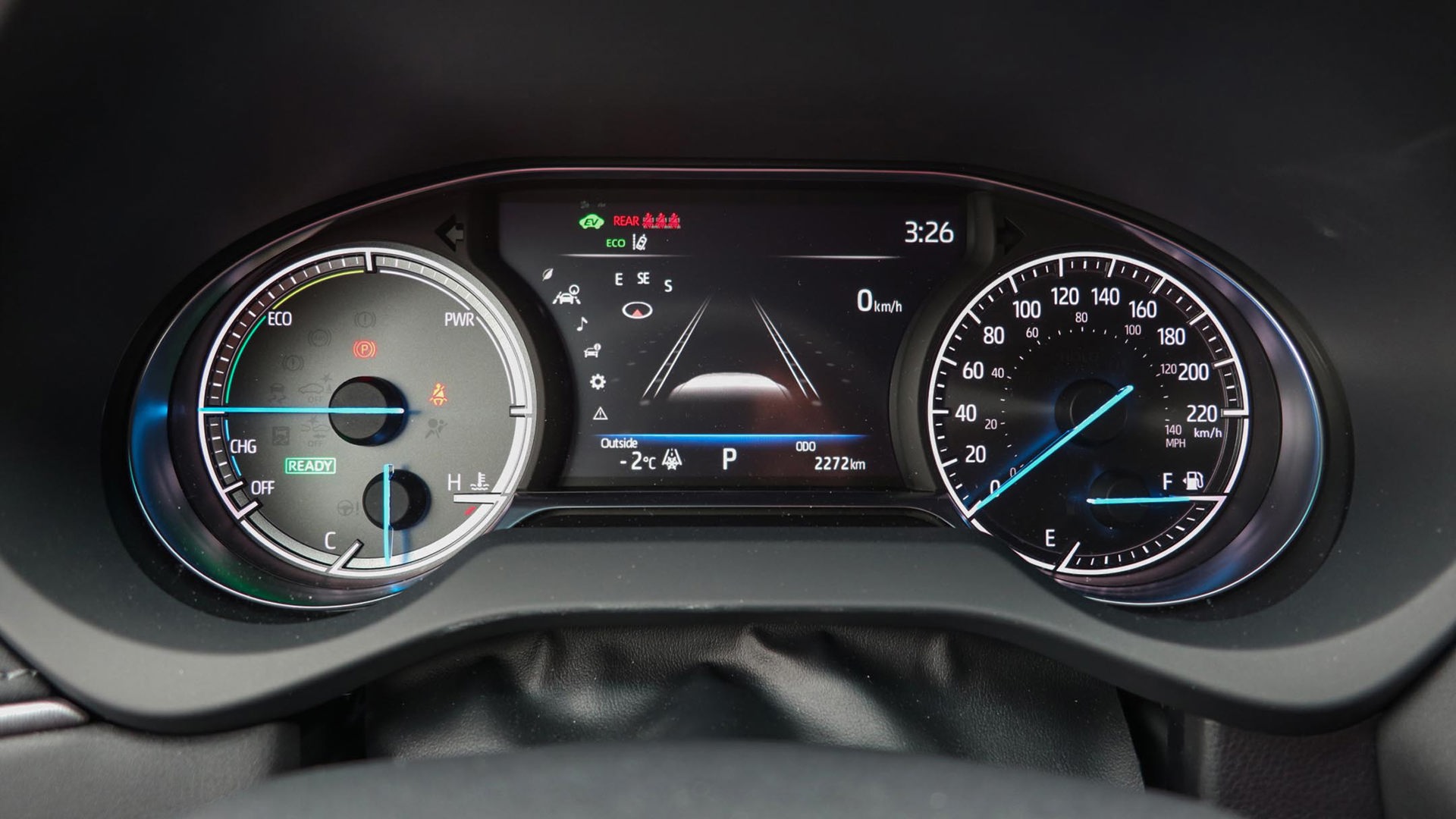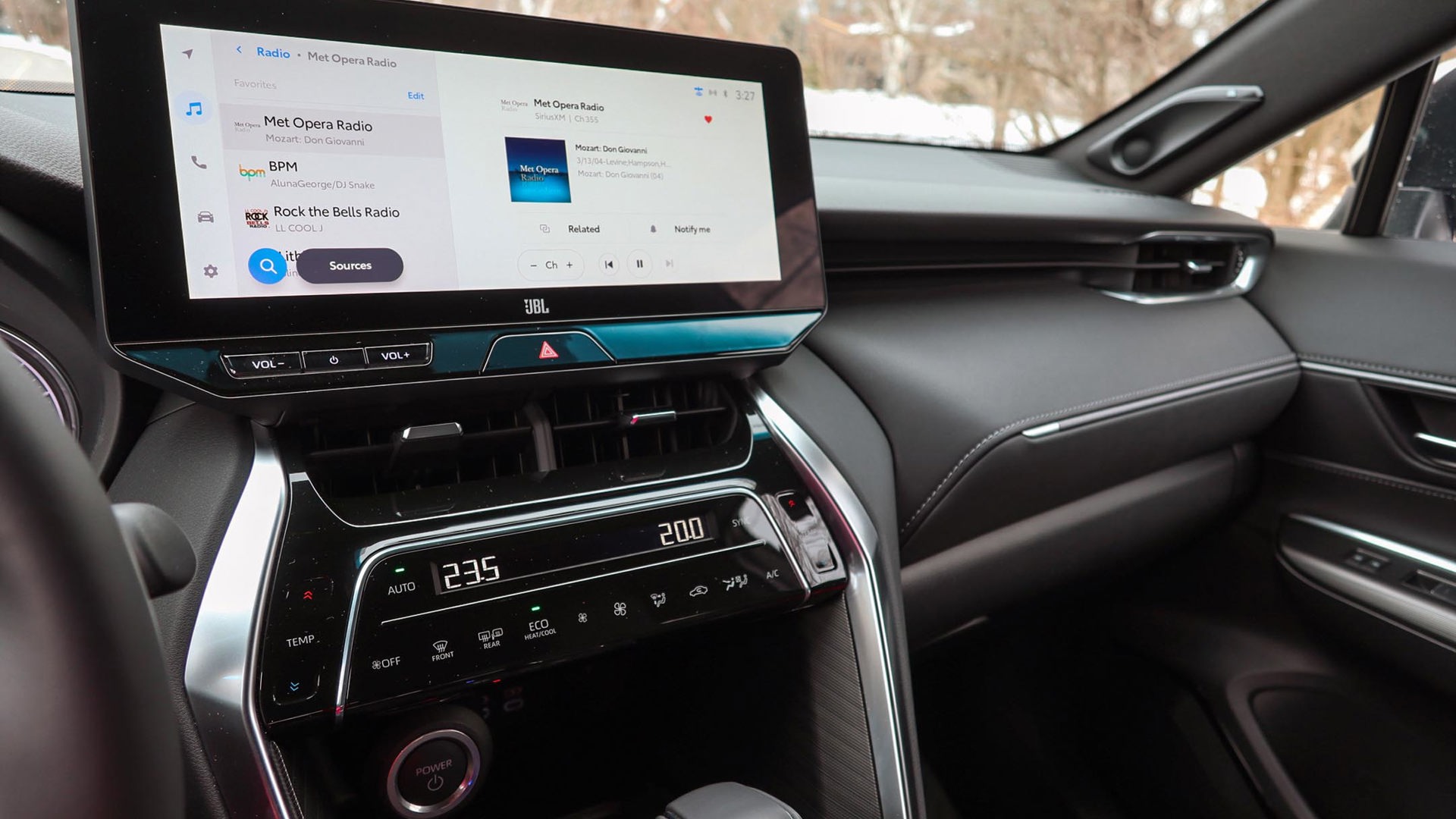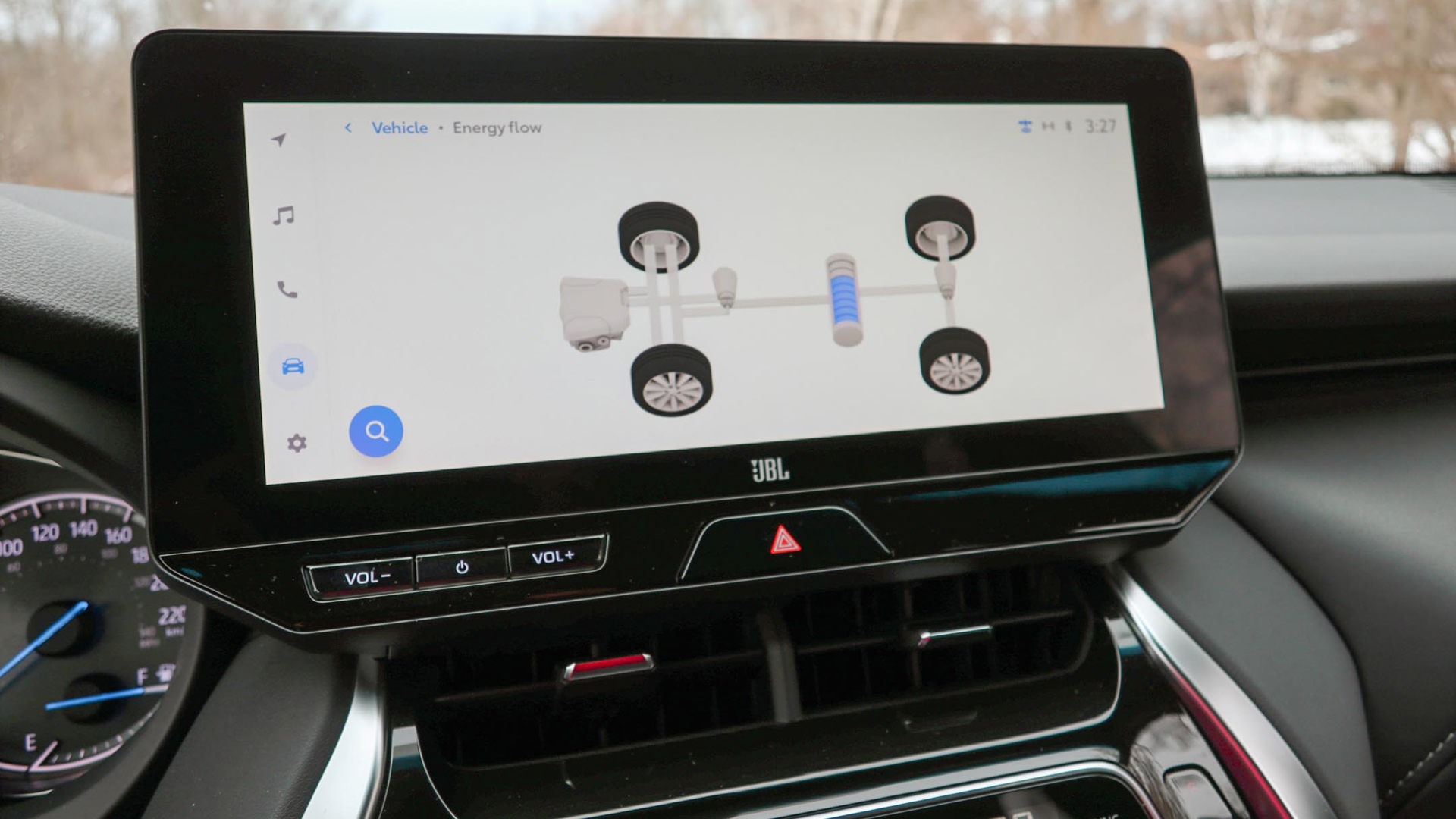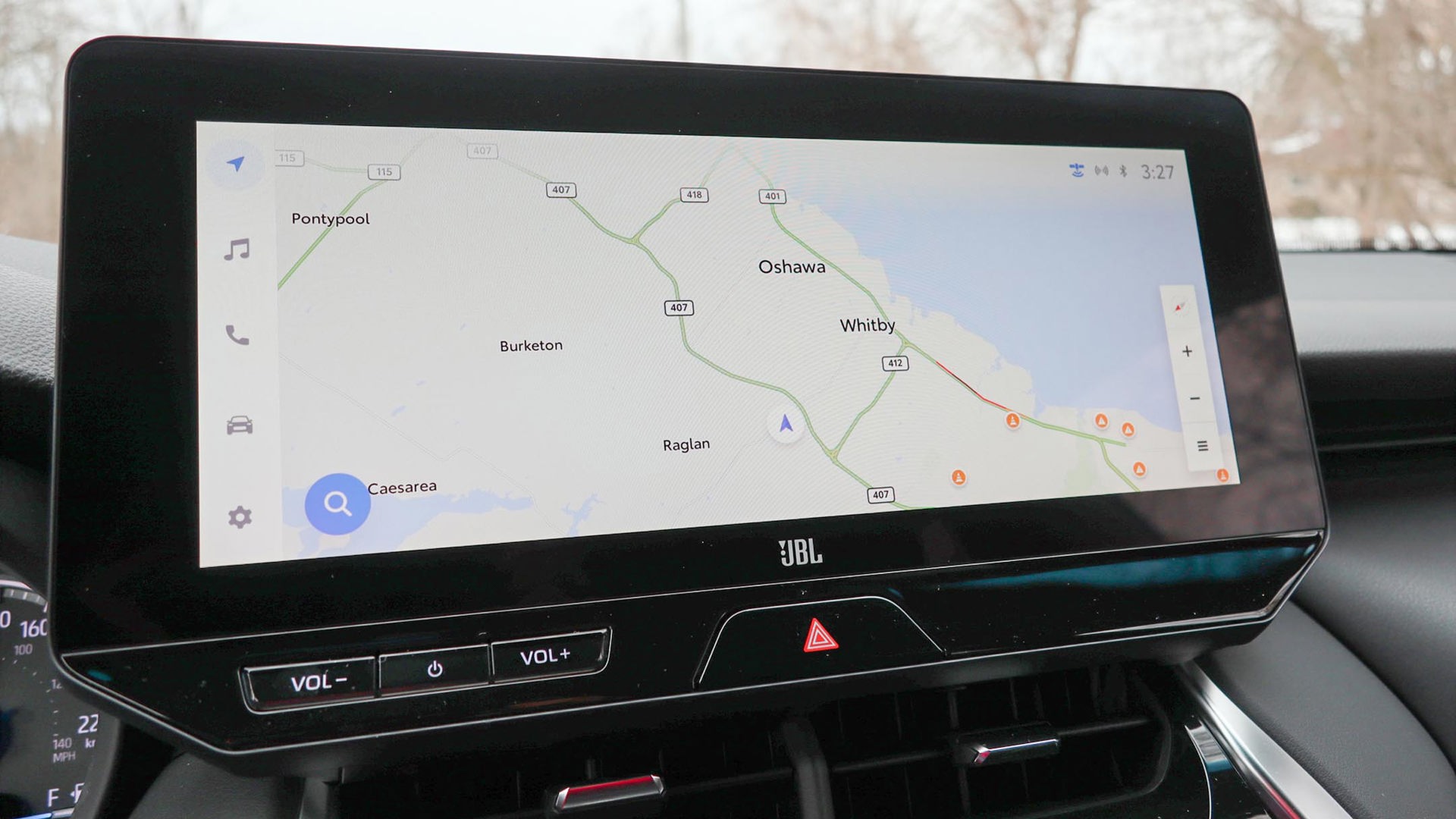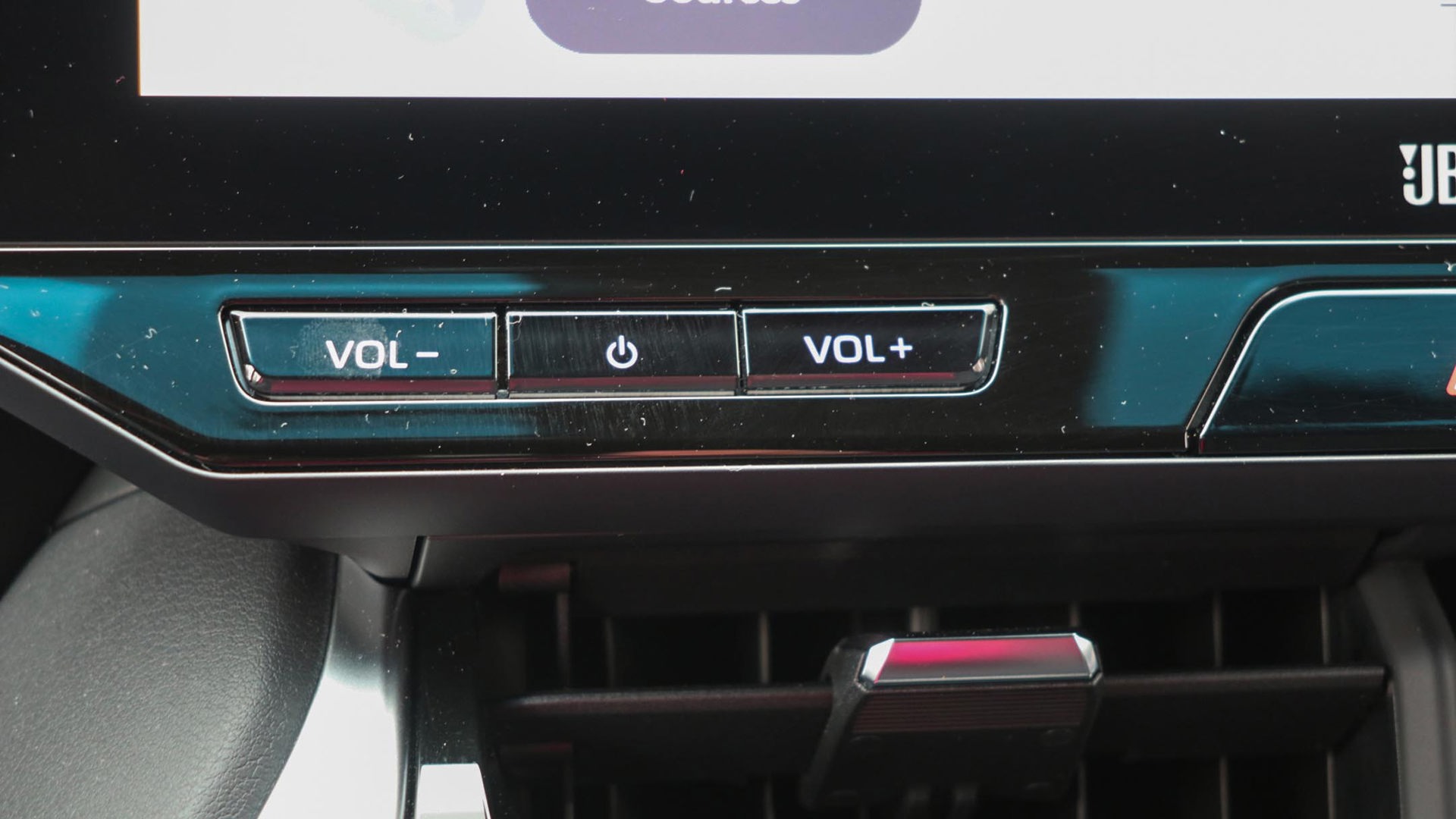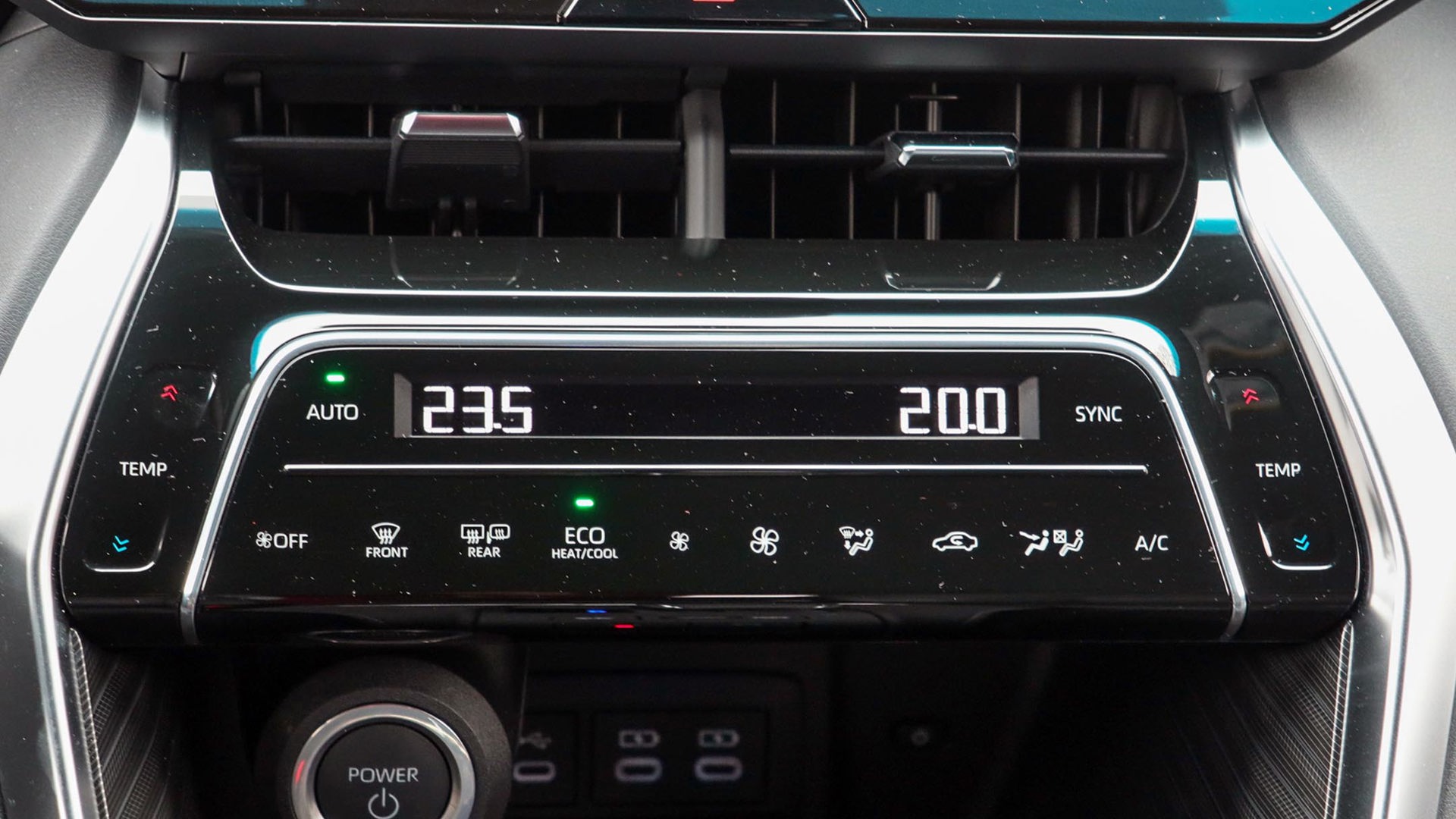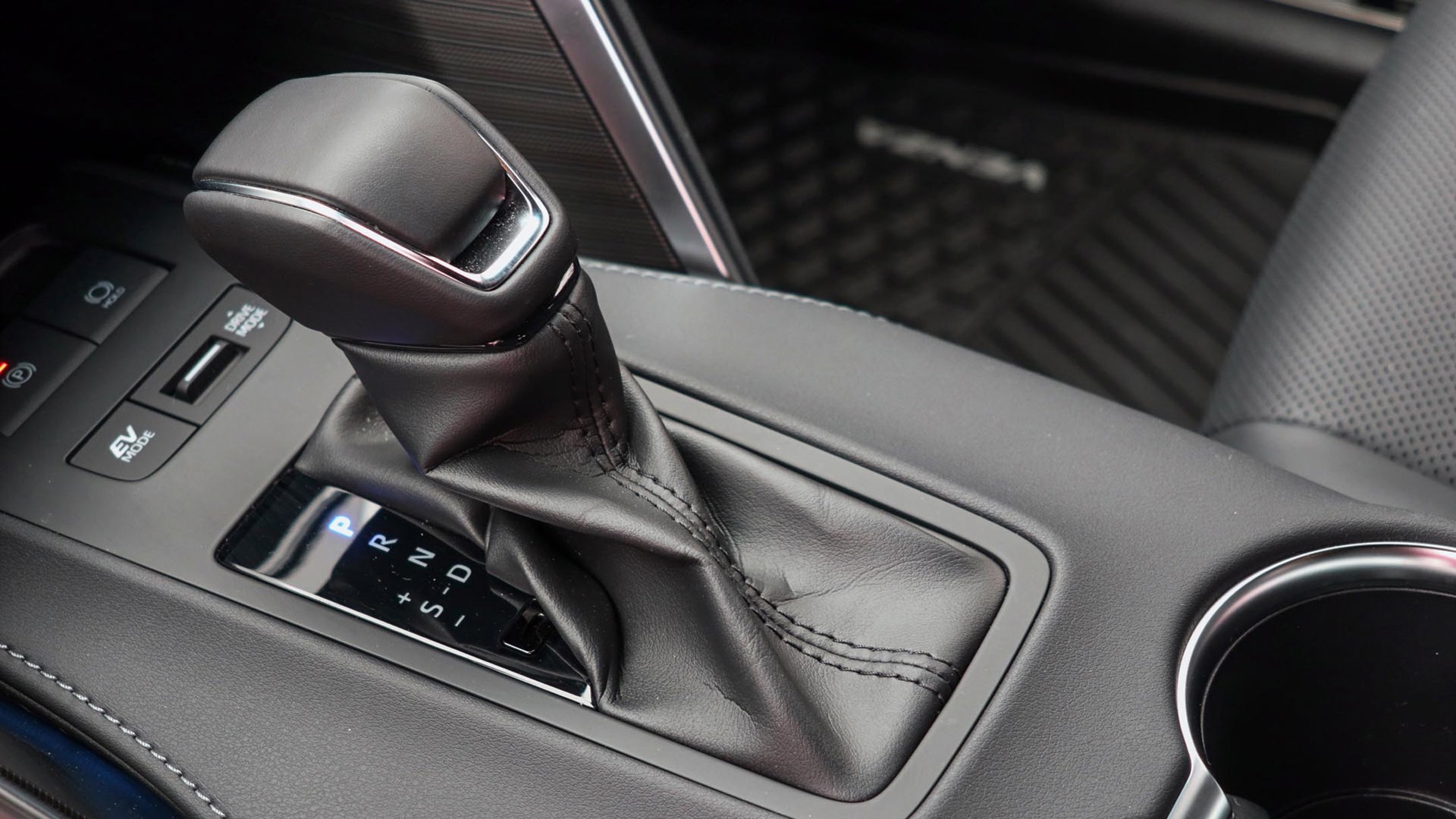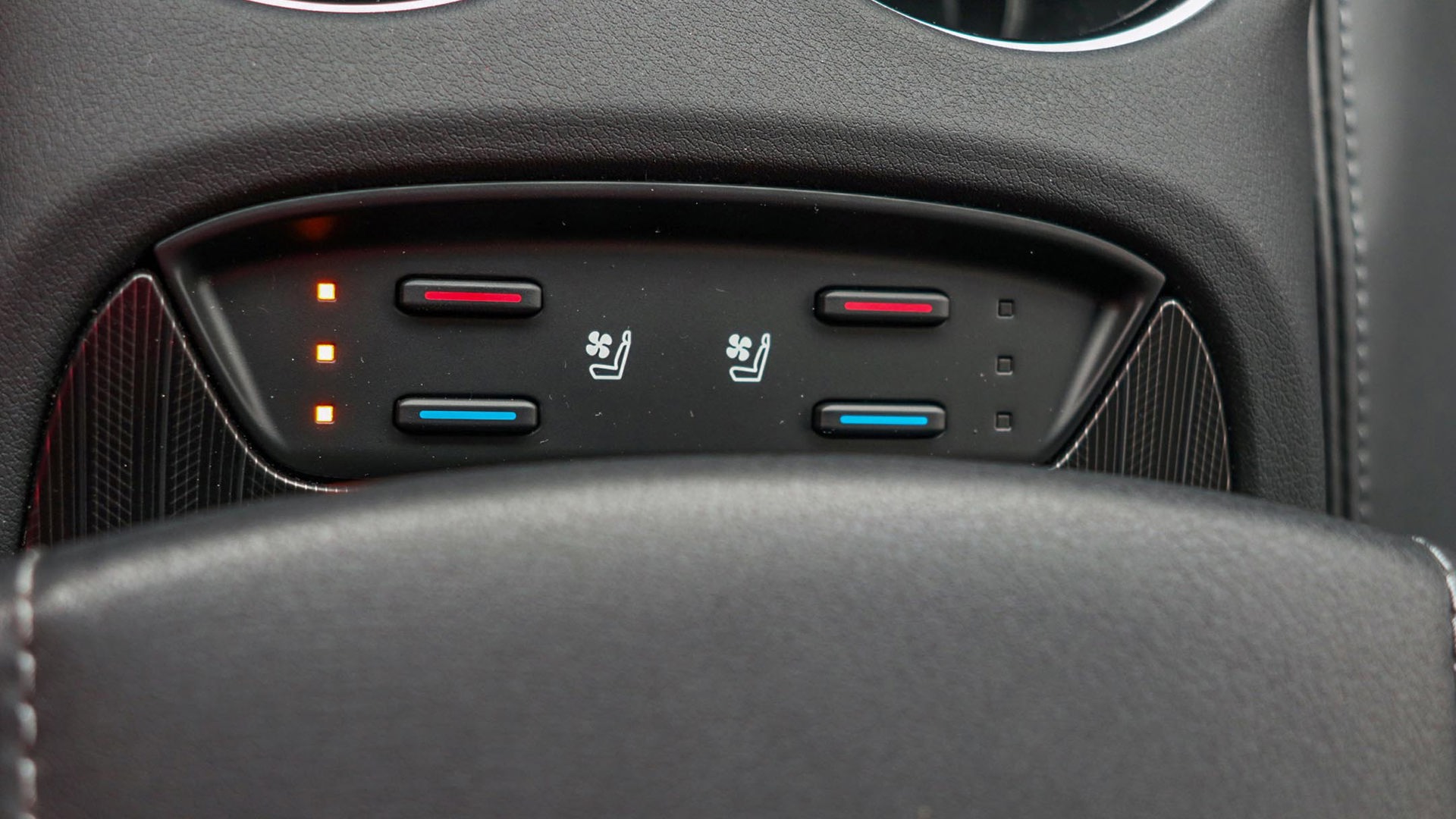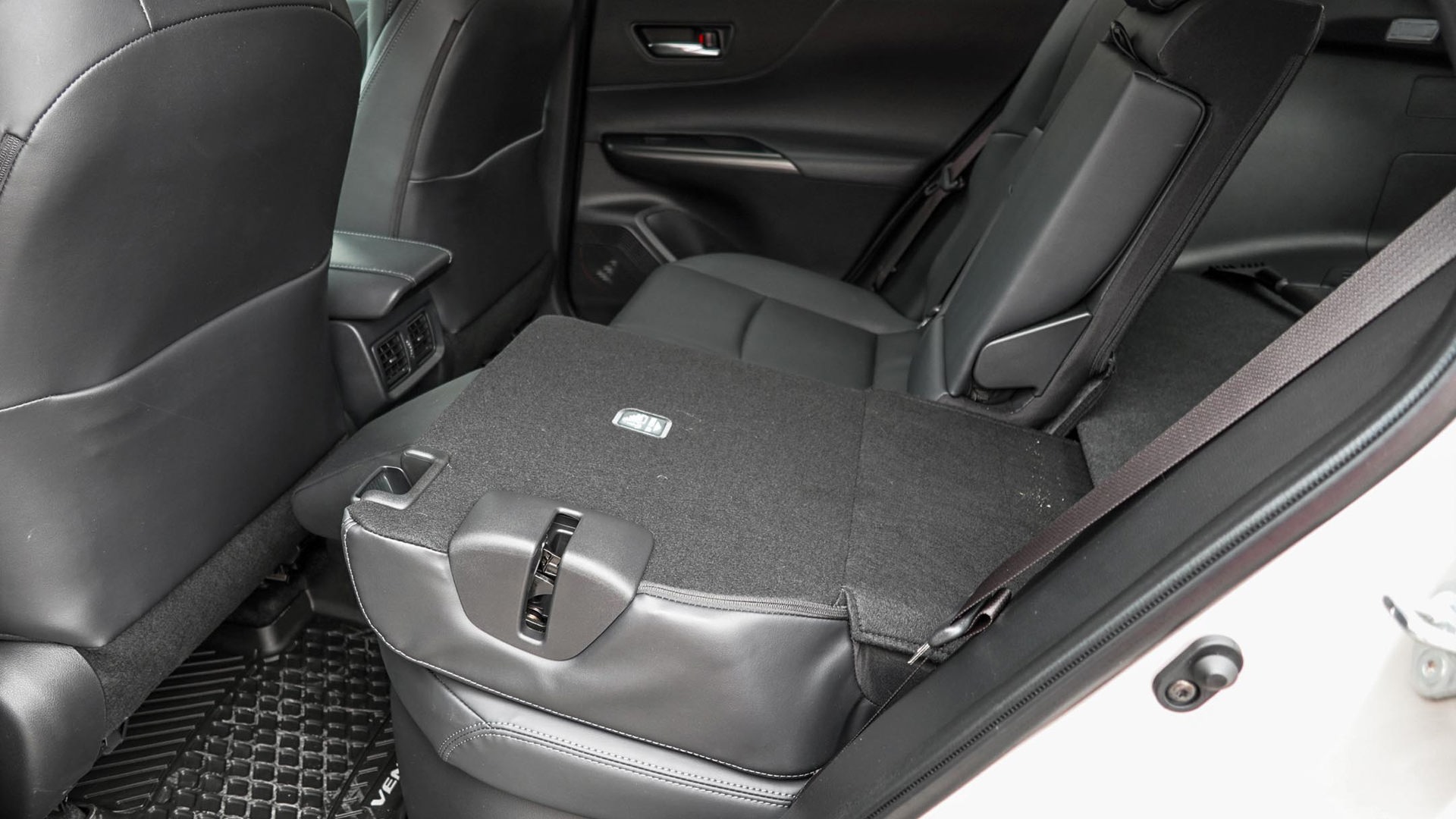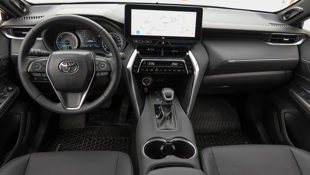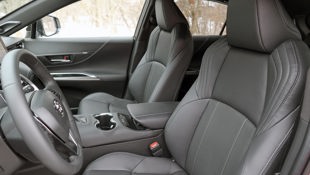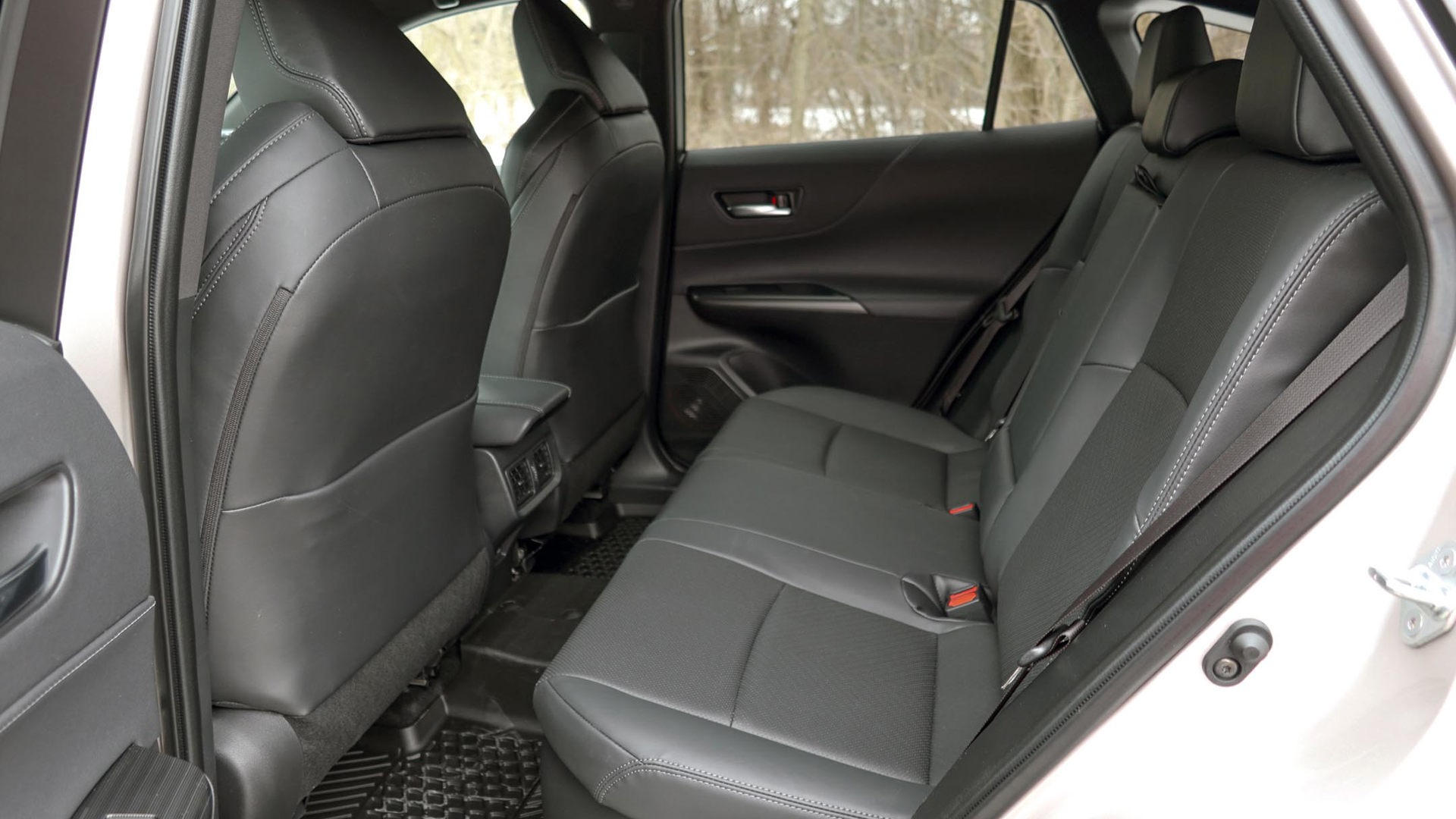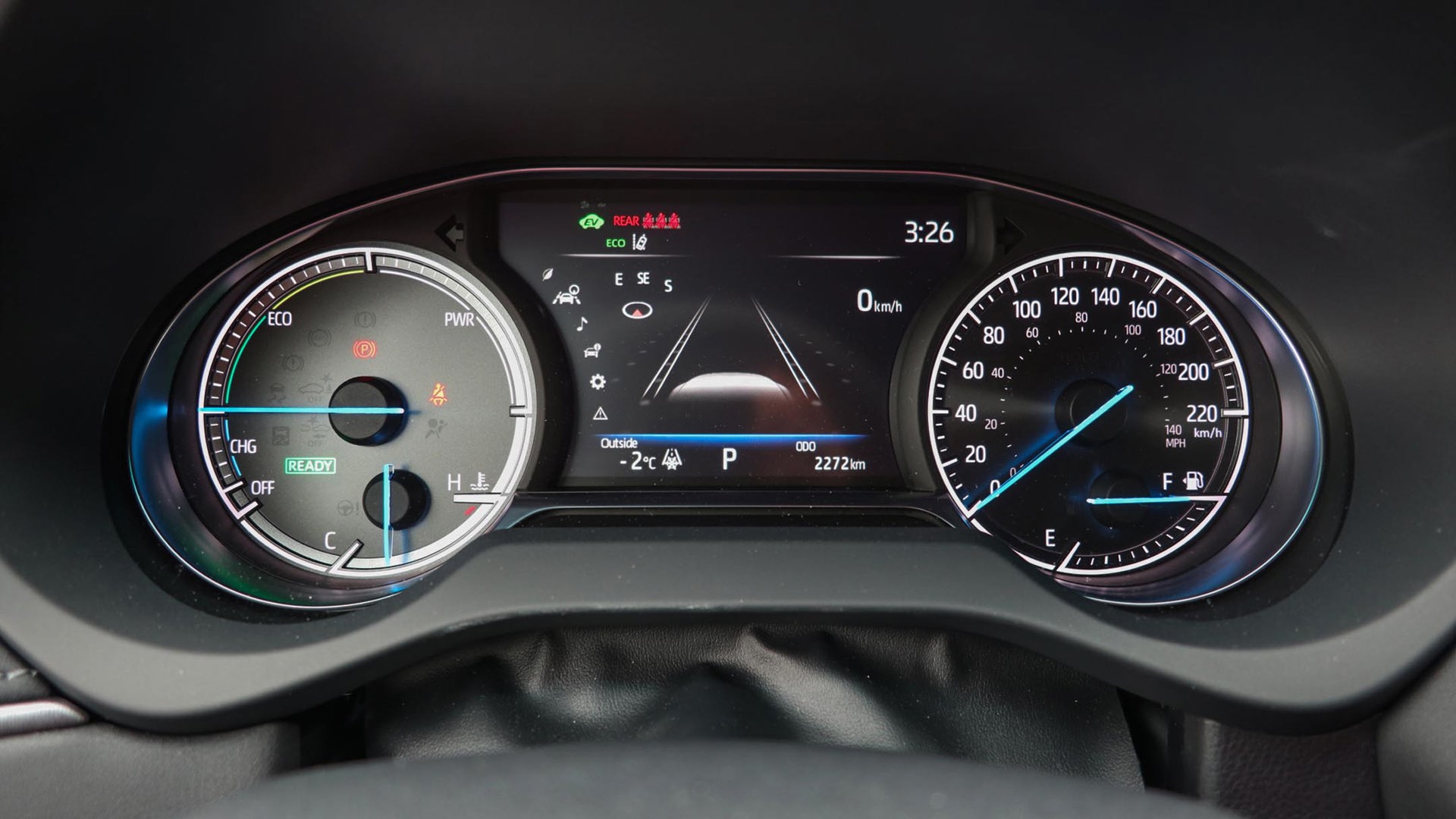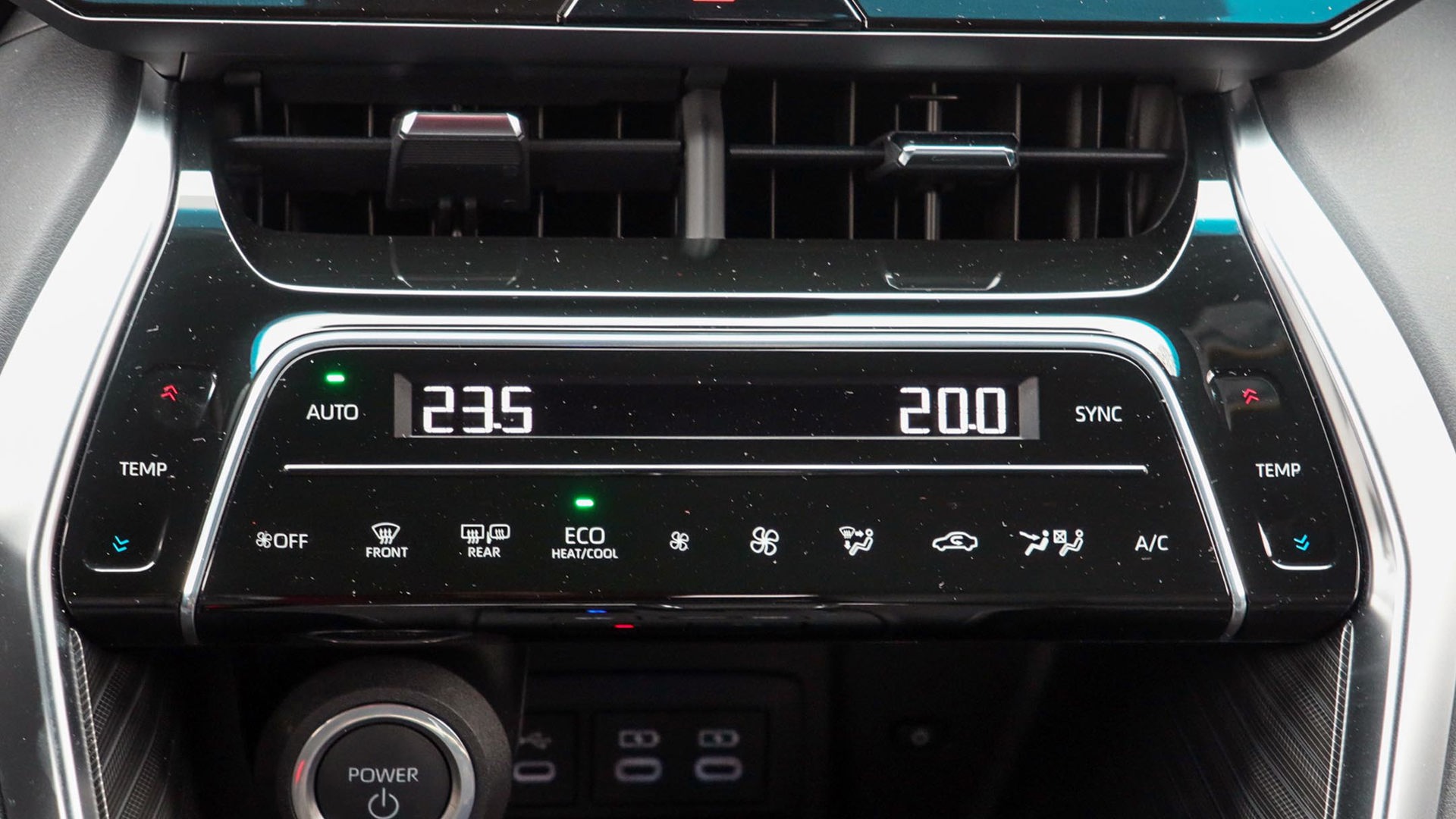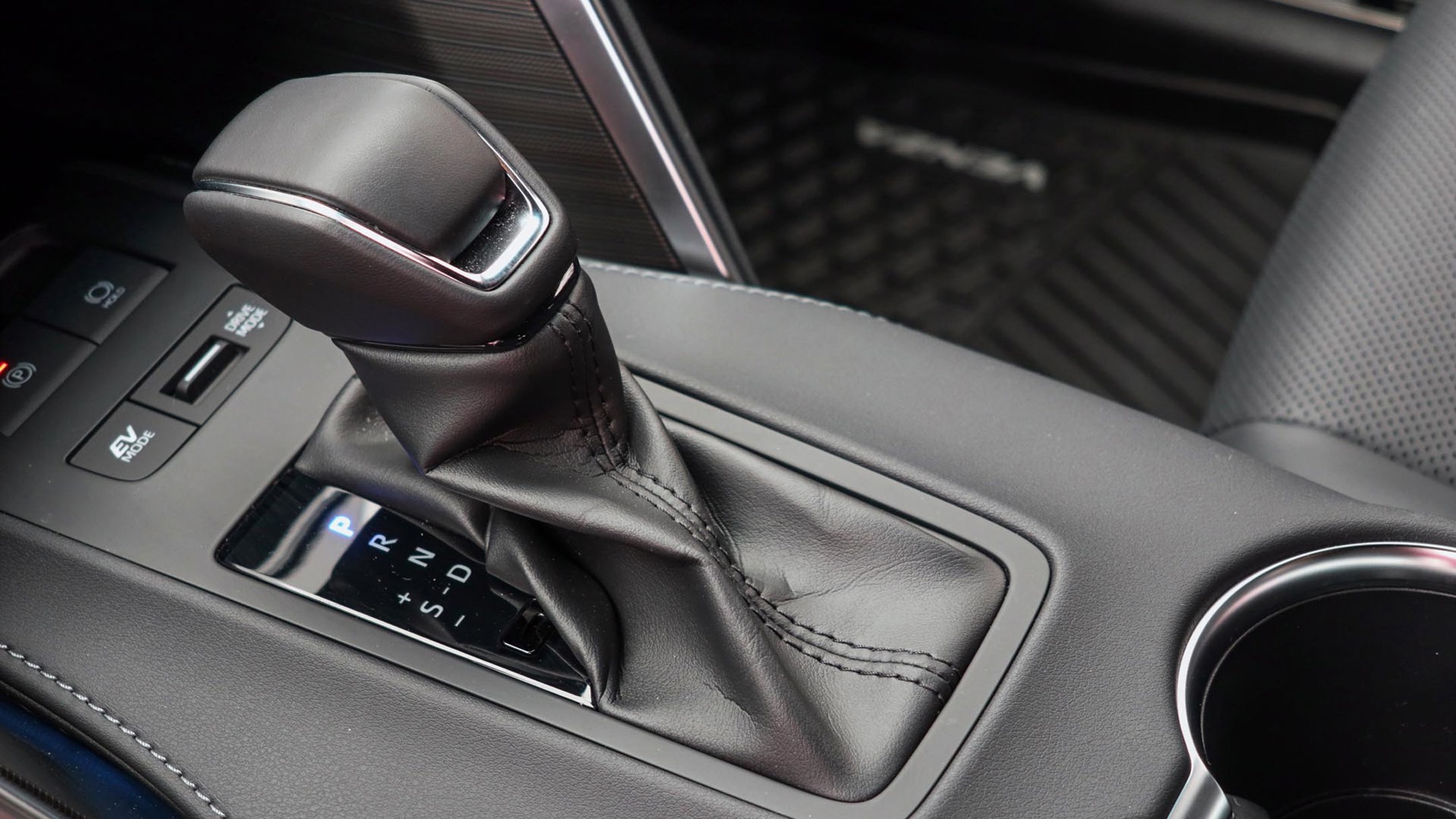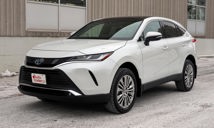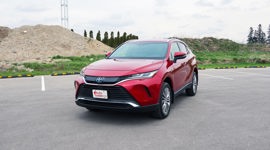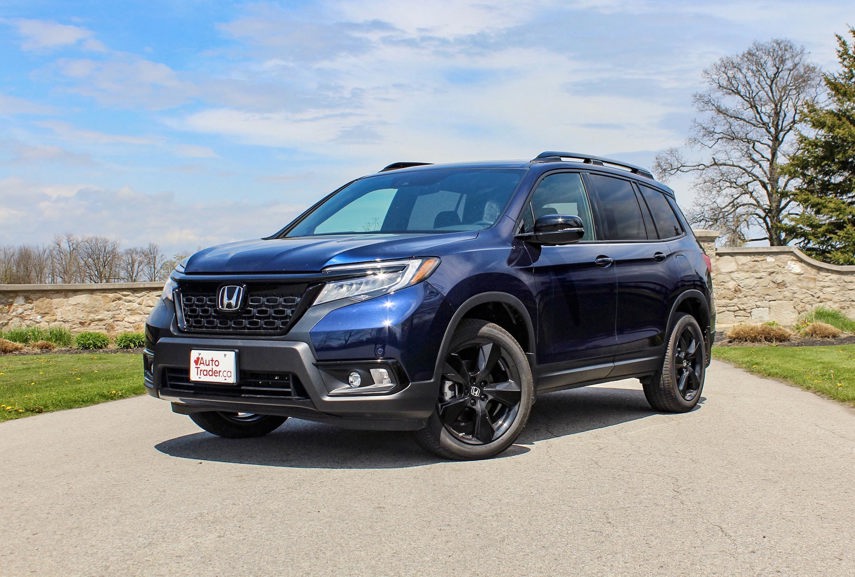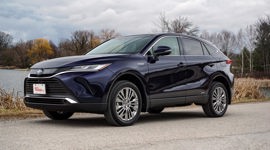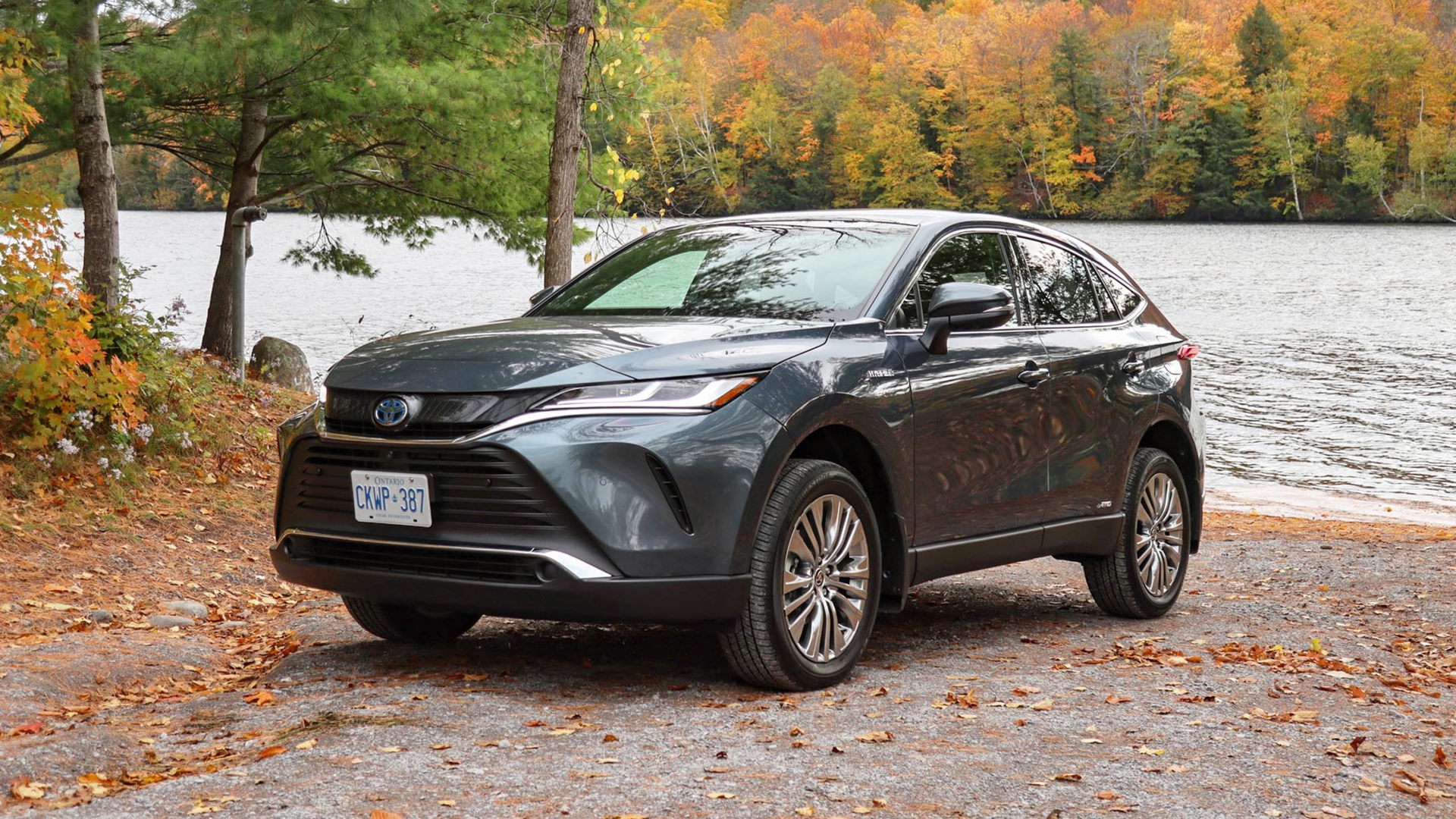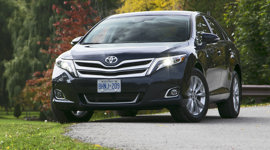 AutoTrader SCORE
AutoTrader SCORE
-
STYLING8/10
-
Safety9/10
-
PRACTICALITY6/10
-
USER-FRIENDLINESS8/10
-
FEATURES8/10
-
POWER8/10
-
COMFORT8/10
-
DRIVING FEEL8/10
-
FUEL ECONOMY9/10
-
VALUE8/10
The 2023 Toyota Venza occupies an unusual niche within the Toyota lineup, with styling and features that move it closer toward Lexus territory.
For this year, the Venza receives upgrades to its multimedia and driver-assist systems, and some new features in its upper trims. The entry-level Venza LE starts at $43,080, including a non-negotiable delivery fee of $1,930. I drove the mid-level XLE, which rings in at $49,320, while the top-level Limited is priced at $52,780. All come standard with a hybrid powertrain and all-wheel drive.
Styling: 8/10
The Venza is a handsome machine from all angles, with just enough chrome to set off its sculpted nose, and a smooth side profile. The shape of the side windows gives the impression of a lowered rear roofline, but it’s an illusion and back-seat passengers enjoy slightly more headroom than those in the front. However, the sharply-raked rear window cuts down on visibility.
The Venza is related to the Toyota RAV4 and their overall dash designs are similar, but the Venza deviates with a tall centre console that disappears into the centre stack.
Safety: 9/10
In crash testing, the Venza achieves the highest five-star rating from the United States National Highway Traffic Safety Administration (NHTSA). It receives a Top Safety Pick designation from the Insurance Institute for Highway Safety (IIHS). It missed the highest Top Safety Pick+ designation due to the not-for-profit’s new side-crash test, which better simulates being struck by a larger SUV. A vehicle must get the highest “Good” to be a Top Safety Pick+ winner, but the Venza scored one down at “Acceptable.” It does get a “Good+” rating for how easy its child-seat tethers are to use.
For 2023, the Venza’s driver-assist systems are improved, including the ability to detect bicycles or pedestrians when making a turn, and emergency steering assist that stabilizes the vehicle if the driver swerves to avoid a collision. All trims include adaptive cruise control, lane departure warning, lane-tracing assist, emergency front braking, automatic high-beam headlights, blind-spot monitoring with rear cross-traffic alert, and the rearview camera that’s mandatory on all new vehicles. The XLE adds emergency rear braking, while the Limited exclusively has 360-degree cameras and a washer for the rear camera.
Features: 8/10
The three Venza trims come all-in, with no additional options. In addition to the driver assist features, all include a power tailgate, wireless charger, heated front seats, dual-zone automatic climate control, cargo privacy cover, and, new this year, an upgraded standard multimedia system with subscription-based connectivity and convenience, as well as wireless Apple CarPlay and Android Auto.
Also new for 2023, my mid-level XLE tester features an eight-way power passenger seat (up from four-way) and LED fog lights. Beyond that, the trim builds on the base LE with a 12.3-inch centre screen (up from an eight-inch unit), leather-look upholstery (up from cloth), premium audio, driver’s side memory seating, ventilated front seats, a heated steering wheel, auto-dimming rearview mirror, roof rails, and 19-inch wheels over the LE’s 18-inch alloys. The Limited further gives you a head-up display, digital camera mirror, and a panoramic glass roof that switches from transparent to a frosted-like setting to filter out light.
User-Friendliness: 8/10
The Venza’s doors open wide and it’s easy to get in and out. The climate system’s touch controls aren’t as quick to use as dials, but they’re still intuitive. There are buttons for the three-level heated and ventilated seats, heated steering wheel, and power tailgate. Depending on the connectivity subscription, saying “Hey, Toyota” wakes up the voice control for functions like navigation, cabin temperature, or weather reports. The stereo volume is handled by buttons; not as good as a dial, but better than tapping the screen. You can also use the steering wheel buttons for that and other functions.
Practicality: 6.5/10
The Venza may be a crossover, but it’s not as practical as most this size. At 816 L of cargo space with the seats up, it’s at the lower end of the midsize scale where the Honda CR-V has 1,112 L and even the Venza’s sibling RAV4, which is shorter overall, has 1,062 L. The Venza also has a high liftover to get items up and into the trunk, and the tailgate opening is small. The rear seats fold 60/40 and go almost flat.
Meanwhile, the Venza isn’t rated for towing, while most in the segment offer at least a little capacity – usually in the 454 to 1,588 kg (1,000 to 3,500 lb) range. The centre console’s configuration also doesn’t offer a great deal of small-item storage, but you do get large door pockets for stashing items.
Comfort: 8/10
The Venza is comparable in front- and rear-seat headroom to rivals such as the Ford Escape, Honda CR-V, and Hyundai Tucson, as well as for front-seat legroom; but rear-seat leg space is tighter than those competitors. The front seats are very supportive and comfortable, while the rear ones are flatter but still acceptable. I drove it during a bitterly cold week and was very happy with the performance of the heated seats and steering wheel. The cabin is quiet and the ride is very smooth, adding to that Lexus-like feel.
Power: 8/10
All Venza trims come strictly as hybrids, using a 2.5L gas engine with two electric motor-generators up front, and a separate electric motor in the back to drive the rear wheels. The engine alone makes 176 hp and 163 lb-ft of torque, increasing to 219 net hp when the electric motors work alongside it, with an automatic continuously-variable transmission (CVT). Under normal conditions the Venza operates in front-wheel drive, but when extra traction is needed the electric motor in the back powers up the rear wheels to provide all-wheel drive.
The Venza self-charges its hybrid battery through regenerative braking, and doesn’t get plugged in. The system automatically switches between gasoline, electricity, or a combination, depending on driving conditions. There’s a button for electric vehicle (EV) mode, which keeps it on battery-only at low speeds, but the system does that anyway and it shuts off if you go a bit too fast or press the throttle too much, so it’s rather pointless. There’s enough power for highway passing, but the engine does get noisy when accelerating.
Driving Feel: 8.5/10
The Venza is nice to drive, with smooth steering that’s light and responsive but with just enough weight to inspire confidence. It takes curves with a minimum of body roll, and has a well-planted feel on the highway. It brakes smoothly, and the pedal has none of the harsh feel that can sometimes show up on hybrids.
The Venza shares its powertrain with the RAV4 Hybrid (and also some components with the Lexus NX 350h), but uses a lighter-weight and energy-denser lithium-ion hybrid battery to the RAV4’s has a nickel-metal hydride (NiMH) battery. Both batteries are covered by a 10-year/240,000-km warranty.
While they’re similar, the Venza’s transition between electricity and gasoline isn’t as smooth as the RAV4’s, with a slight bump when the engine starts up. It isn’t a dealbreaker, but it doesn’t feel as luxurious as its lower-priced sibling.
Fuel Economy: 9/10
The Venza is rated by Natural Resources Canada (NRCan) at 5.9 L/100 km in the city, 6.4 on the highway, and 6.1 in combined driving. In my cold week with it, including considerable highway driving (where hybrids get poorer efficiency than in the city because they don’t run on their batteries as much), I averaged 8.7 L/100 km. It runs on regular-grade gasoline.
Its midsize rivals are all within fractions in combined driving. The Ford Escape Hybrid is good for 6.0 L/100 km, as are the RAV4 Hybrid and Lexus RX 350h. Hybrid versions of the Honda CR-V and Hyundai Tucson come in at 6.4 L/100 km.
Value: 8/10
The Venza isn’t cheap; instead, shoppers must consider the very narrow niche it occupies between mainstream and luxury. At $43,080 to $52,780, it’s pricier than the Toyota RAV4 Hybrid, which runs from $36,780 to $47,780; but the Lexus NX 350h starts around $54,860 and goes over $70,000. Hybrid competitors such as the Ford Escape, Honda CR-V, and Hyundai Tucson all start above $42,000.
The Verdict
The 2023 Toyota Venza is one of those niche vehicles that people buy as much with their hearts as with their heads. It’s more for empty-nesters than as a family hauler, and for those who want some style and luxury without moving up to a premium brand. And if you happen to be looking at a luxury brand’s lower-level models, have a look at this, too. It could just be the vehicle that fills the bill.
| Engine Displacement | 2.5L |
|---|---|
| Engine Cylinders | I4 |
| Peak Horsepower | 219 hp net |
| Peak Torque | N/A |
| Fuel Economy | 5.9 / 6.4 / 6.1 L/100 km cty/hwy/cmb |
| Cargo Space | 816 / 1,554 L seats up/down |
| Model Tested | 2023 Toyota Venza XLE |
| Base Price | $47,390 |
| A/C Tax | $100 |
| Destination Fee | $1,930 |
| Price as Tested | $49,420 |
|
Optional Equipment
None
|
|
